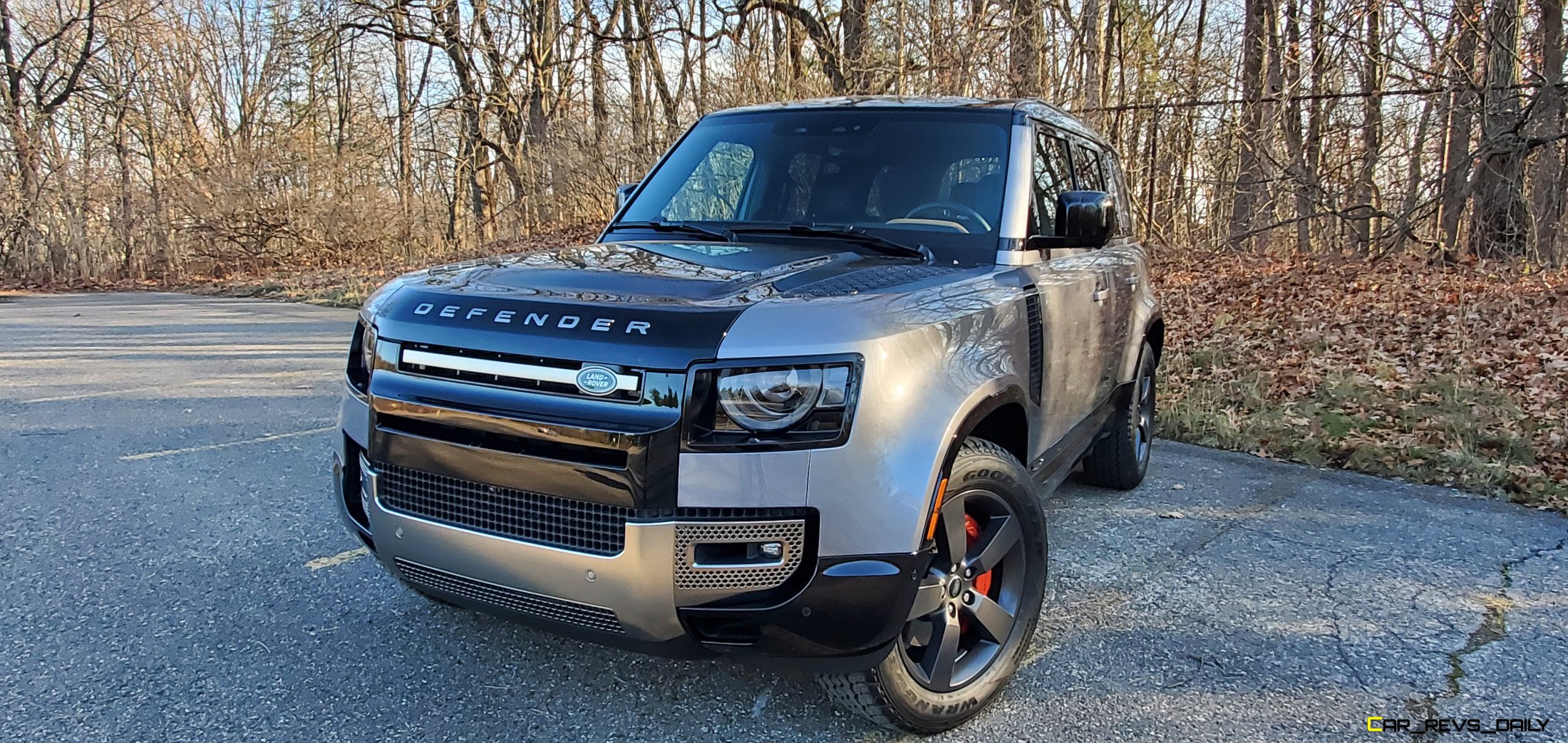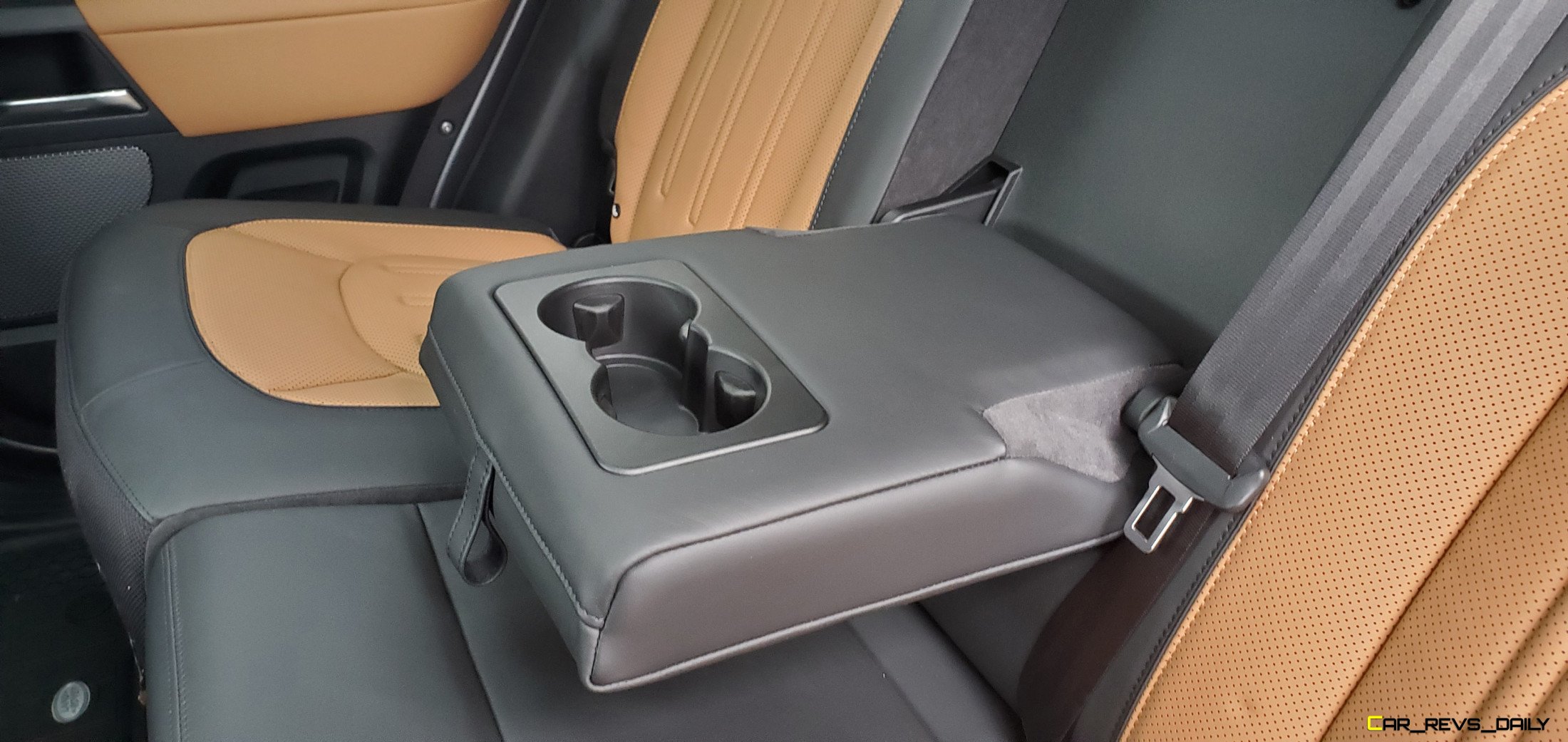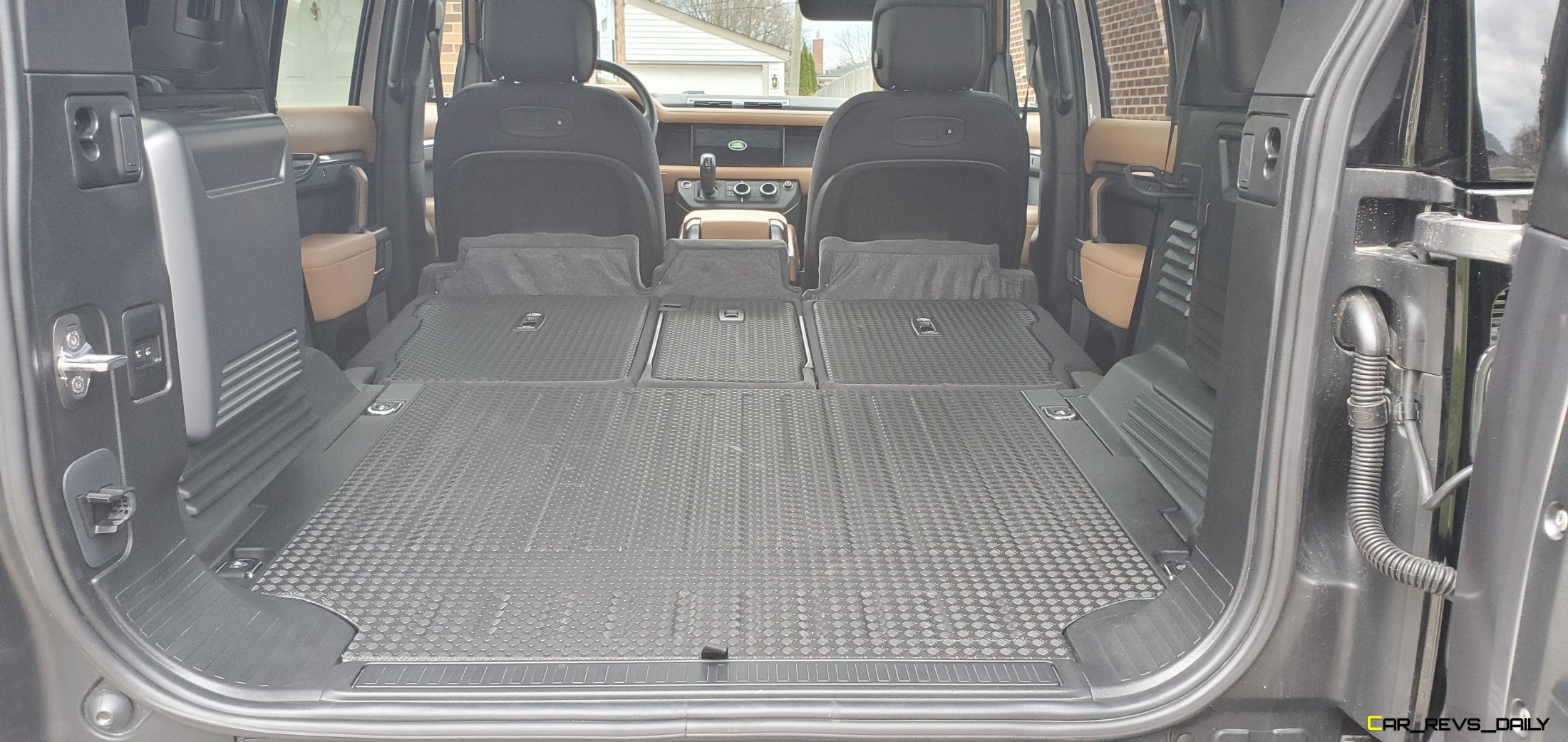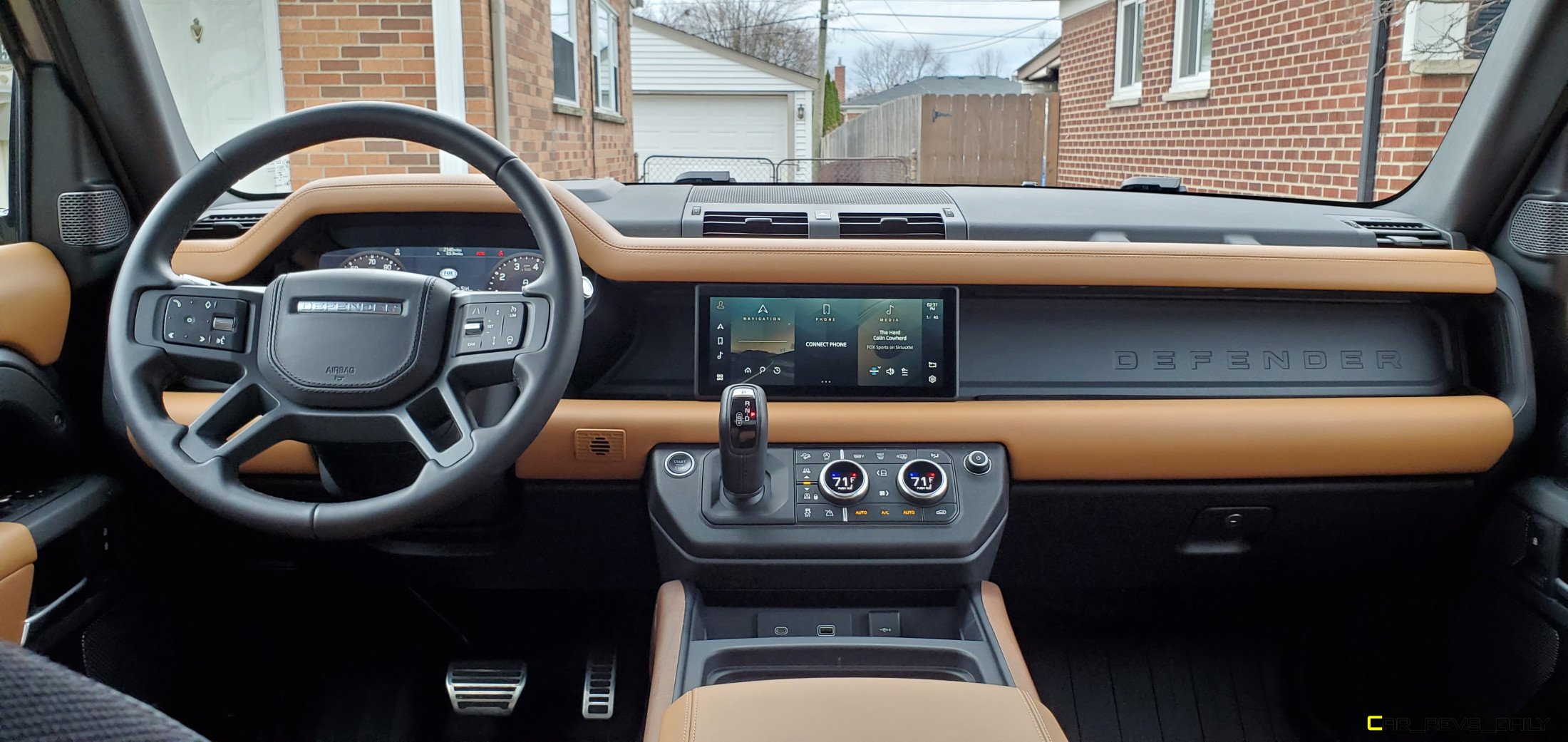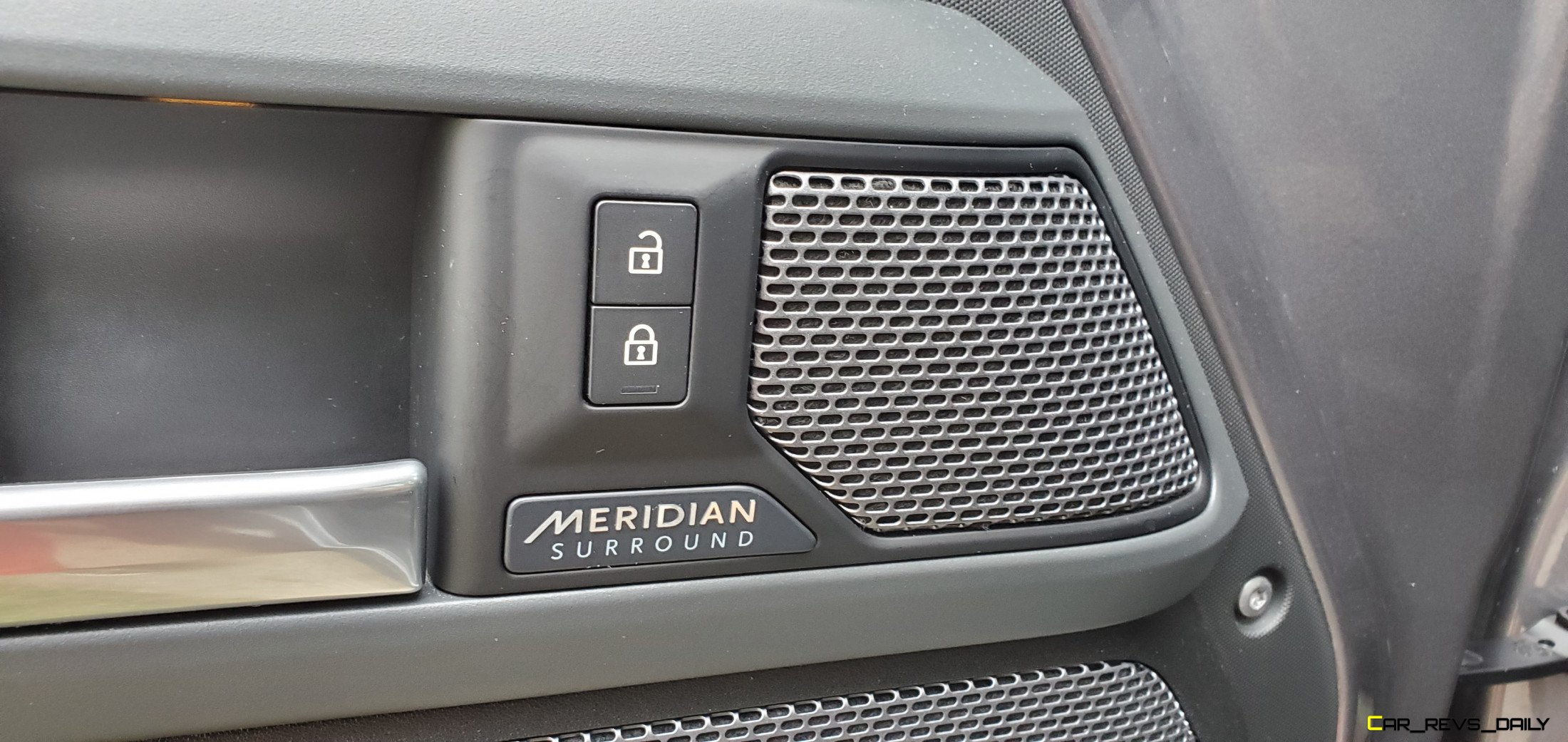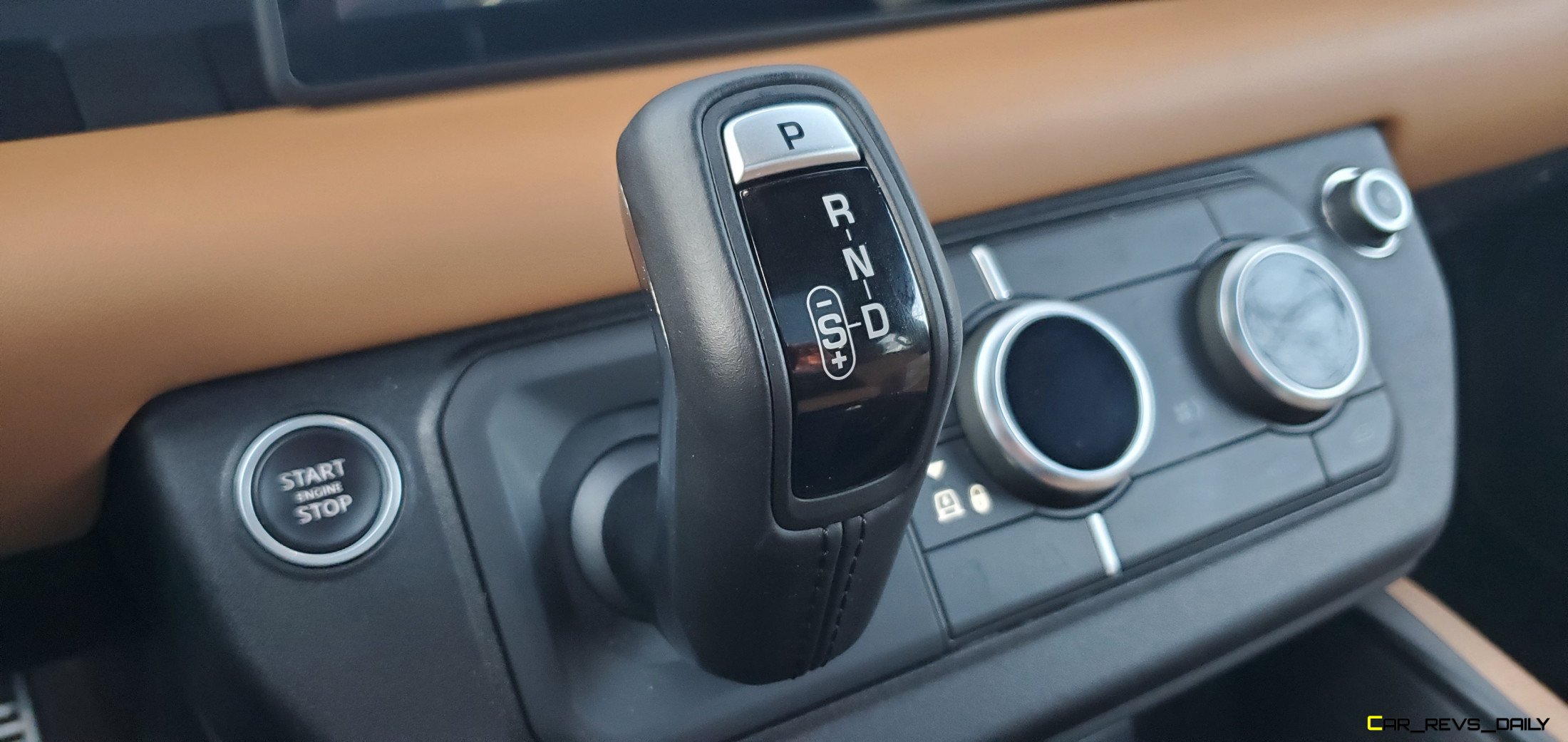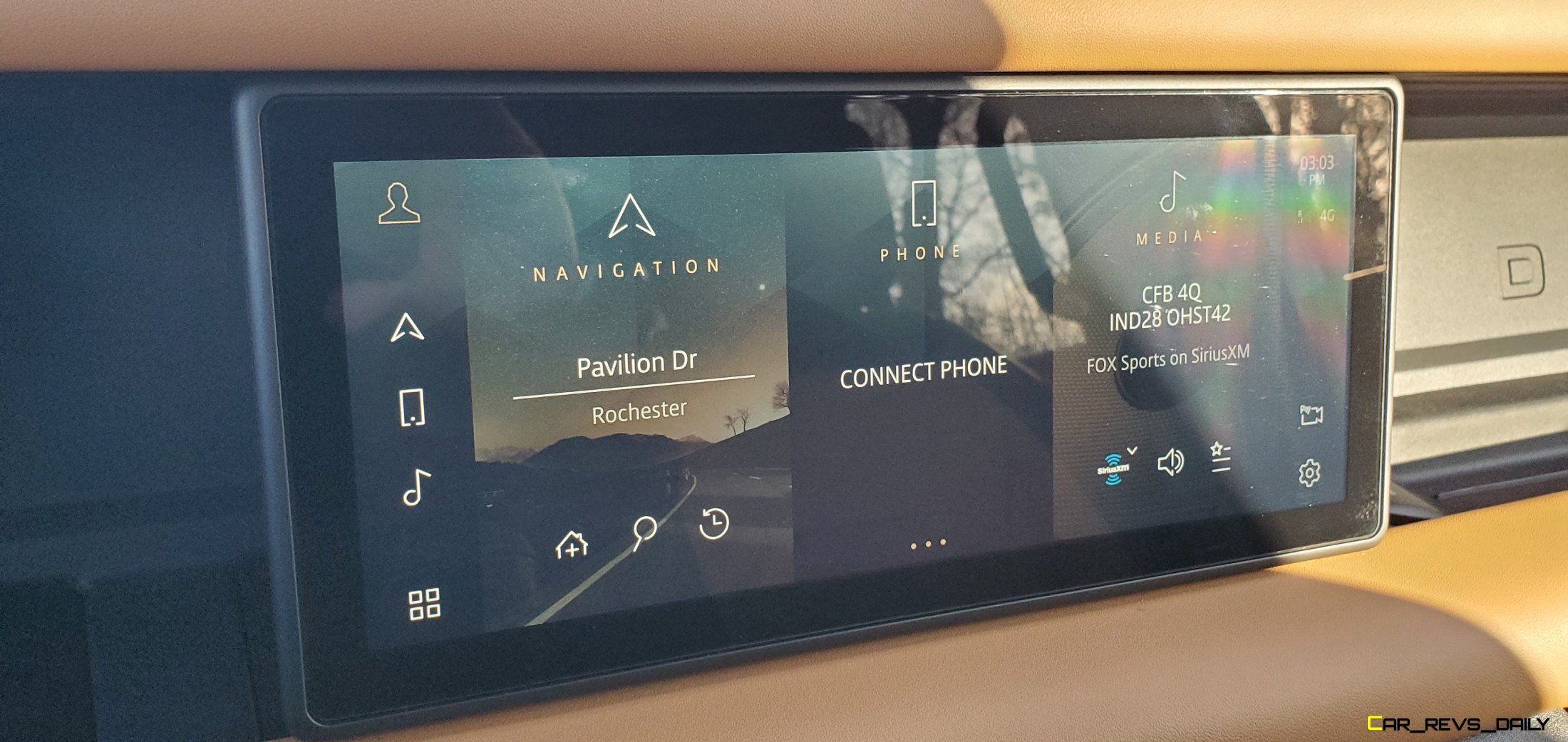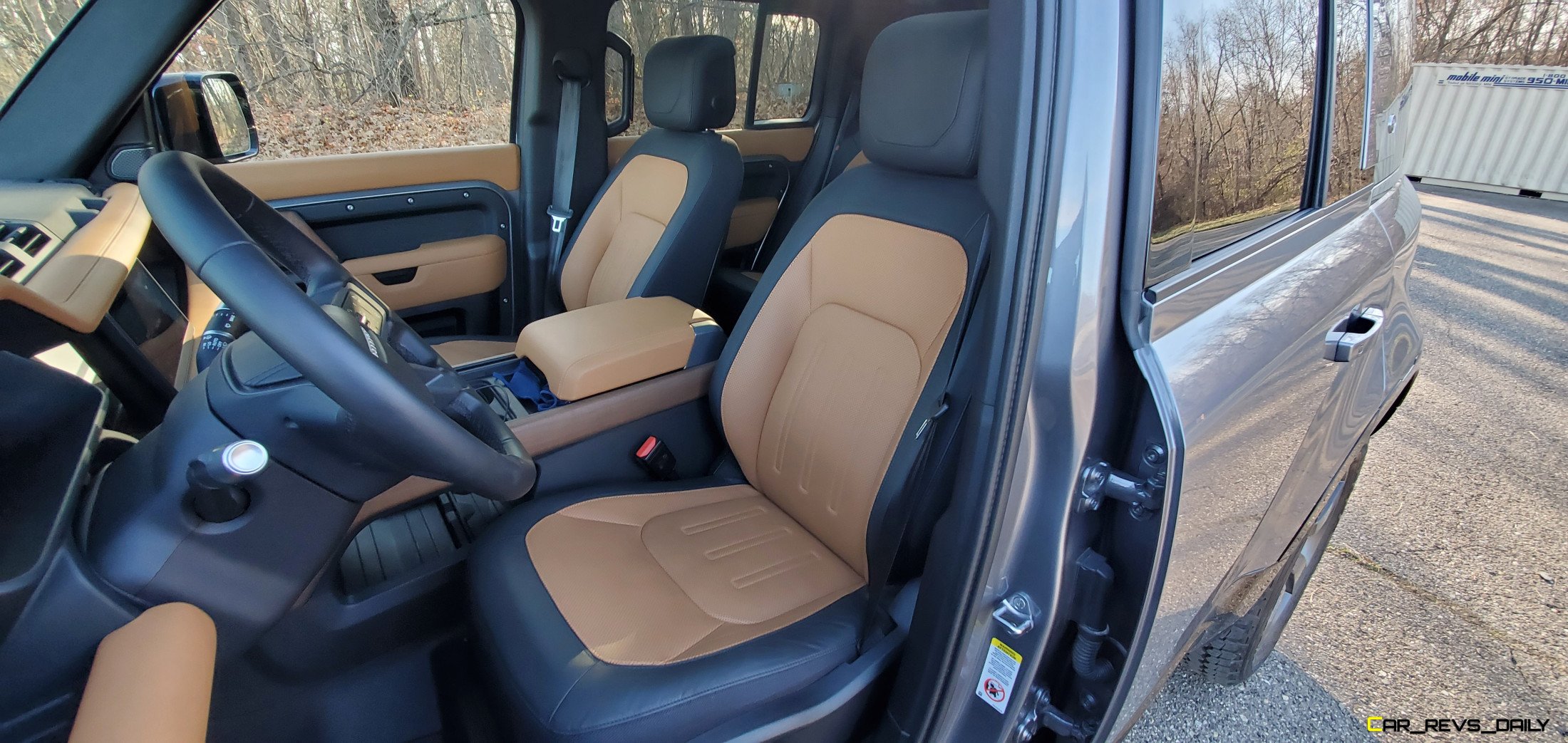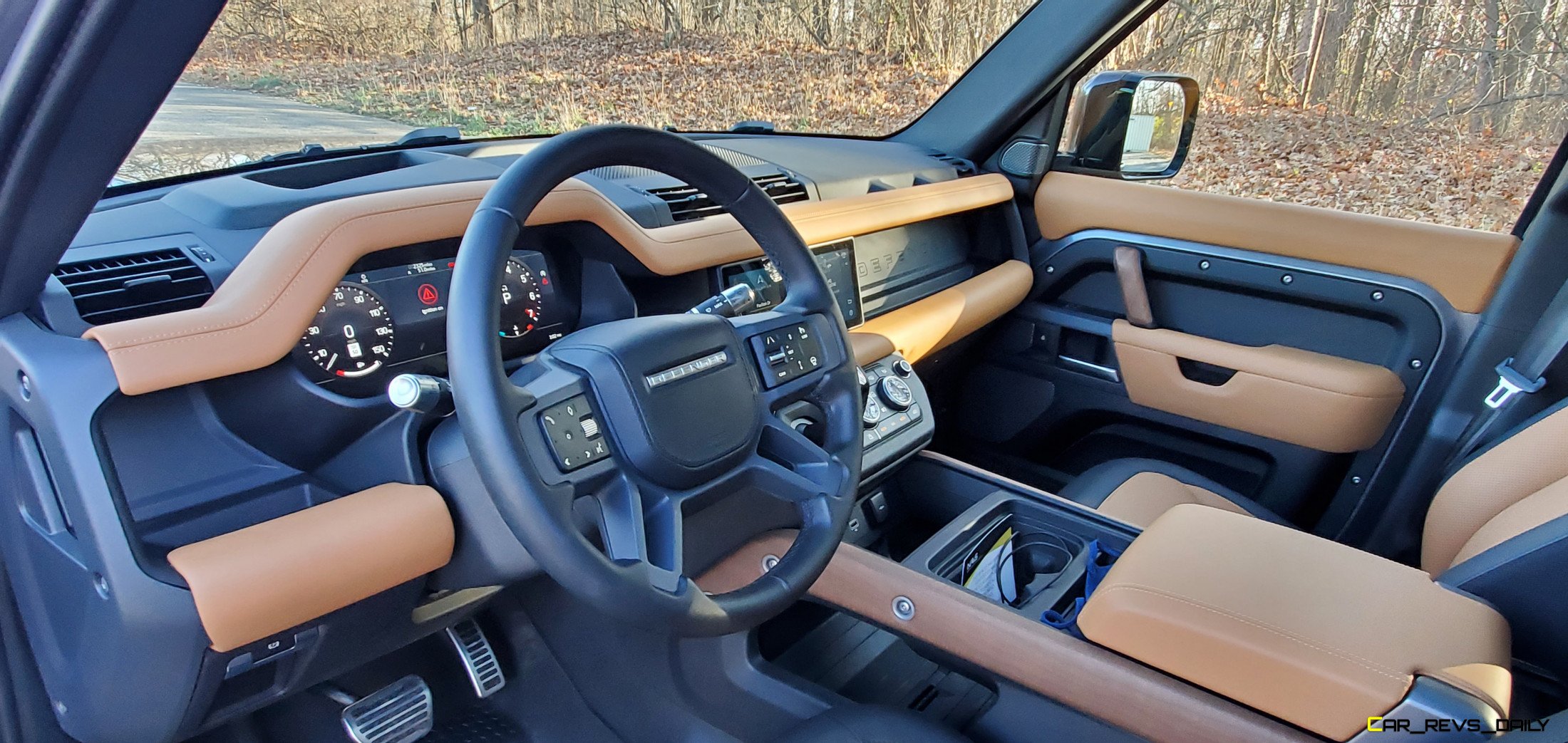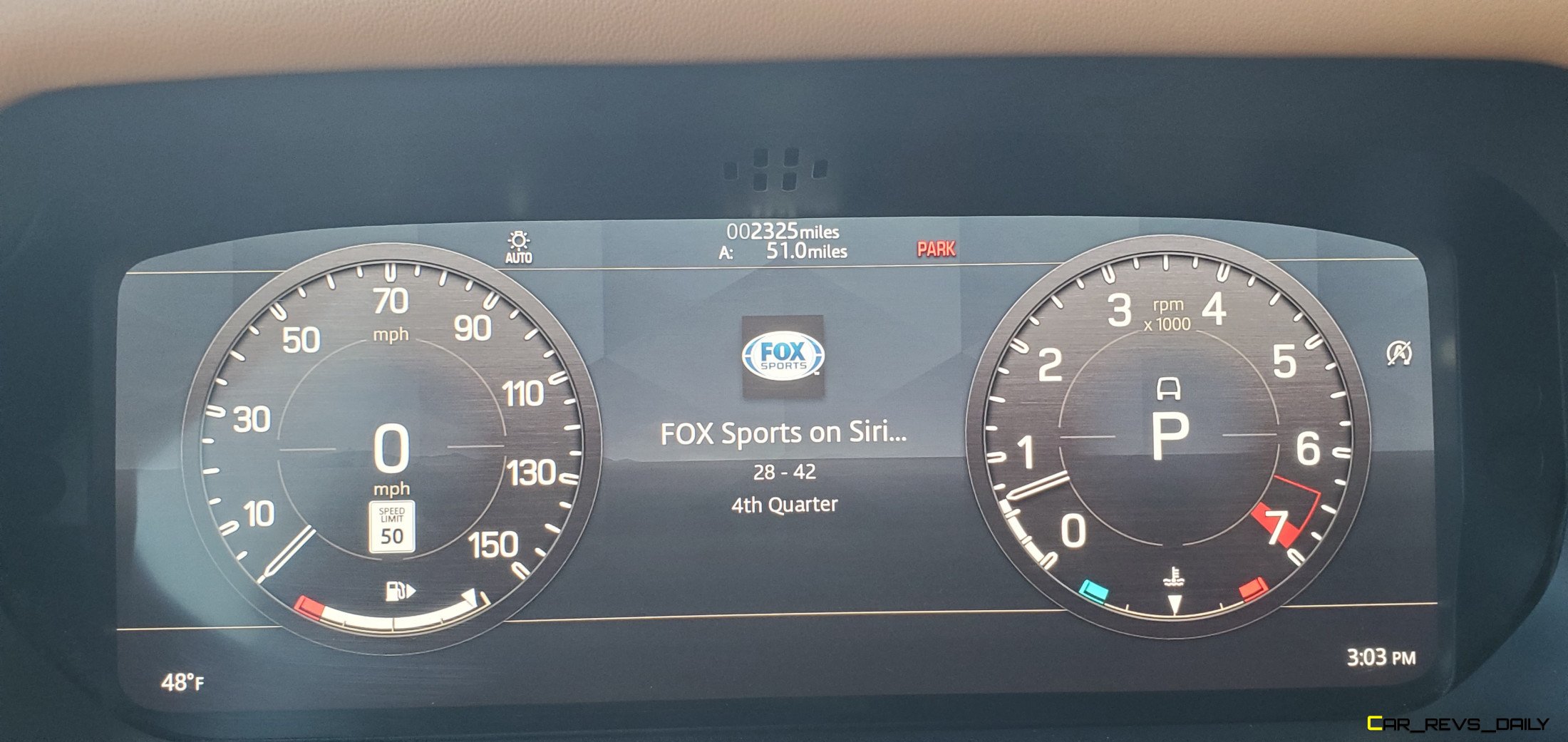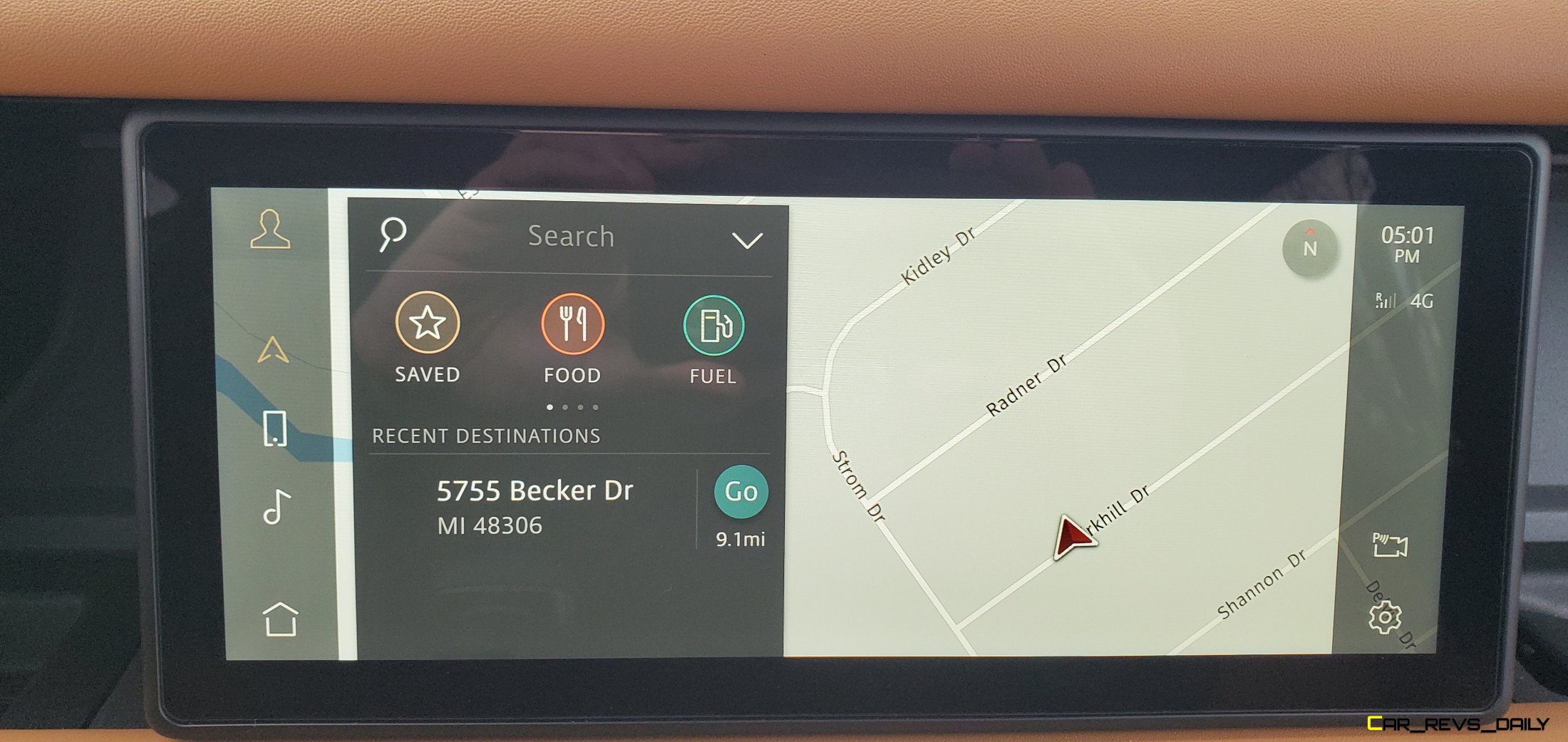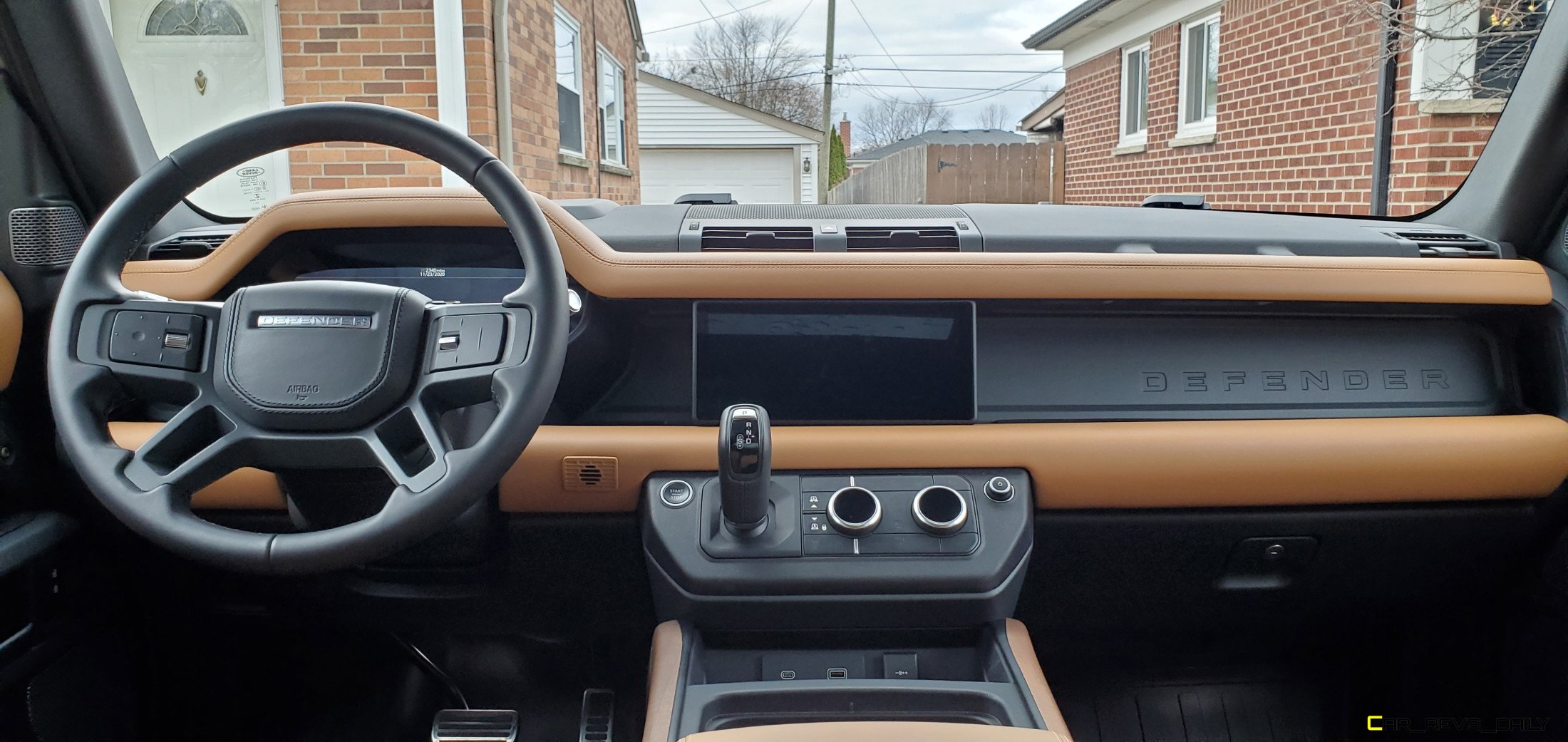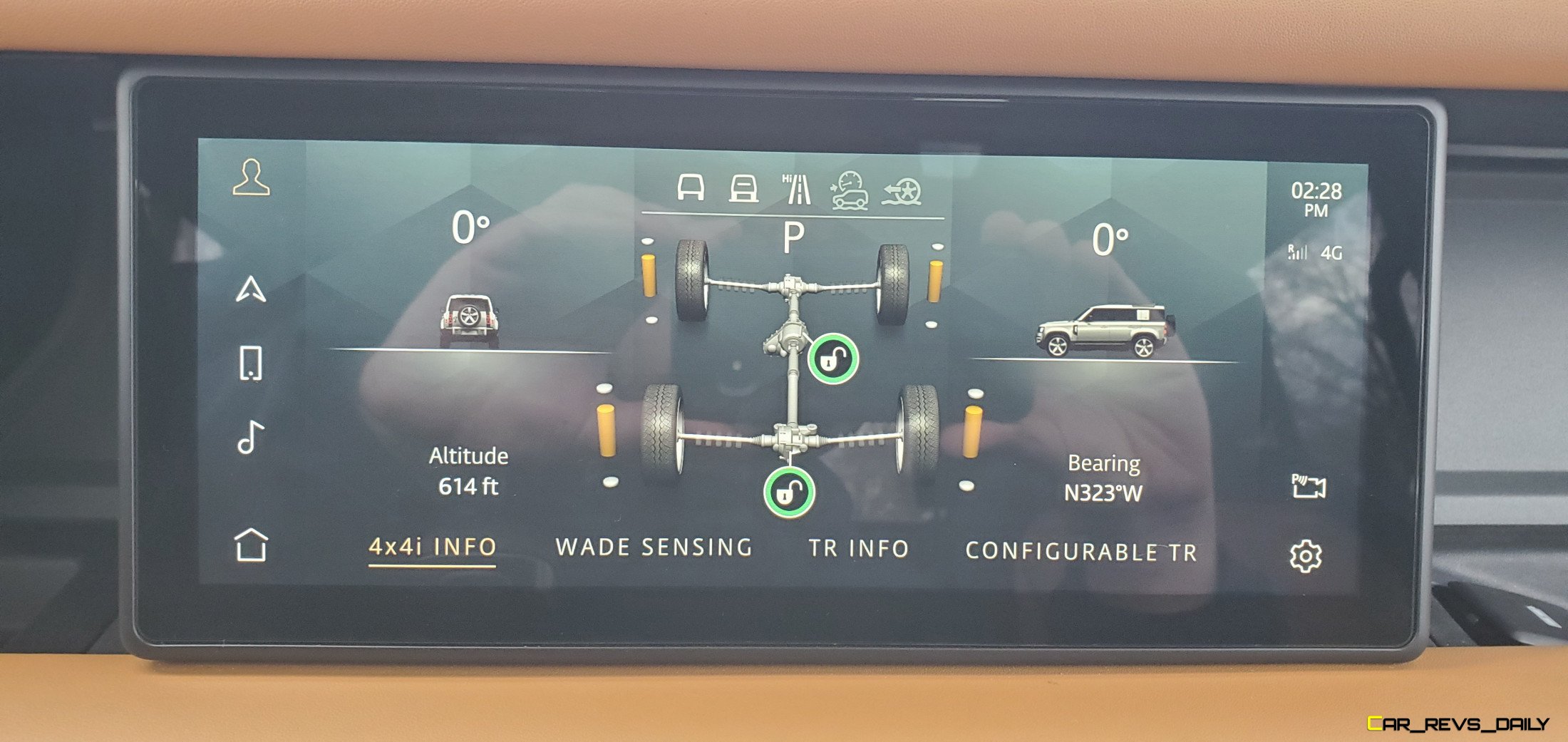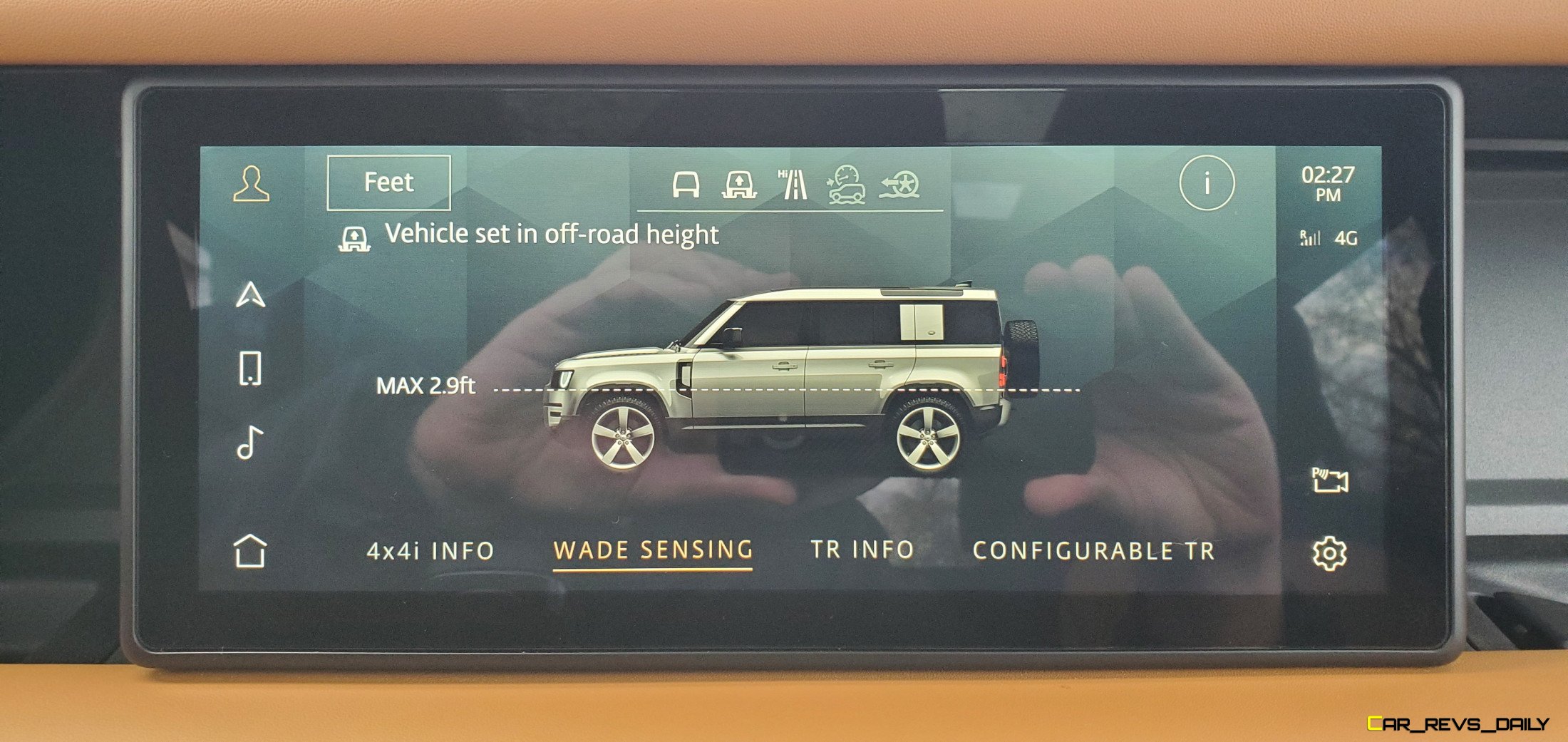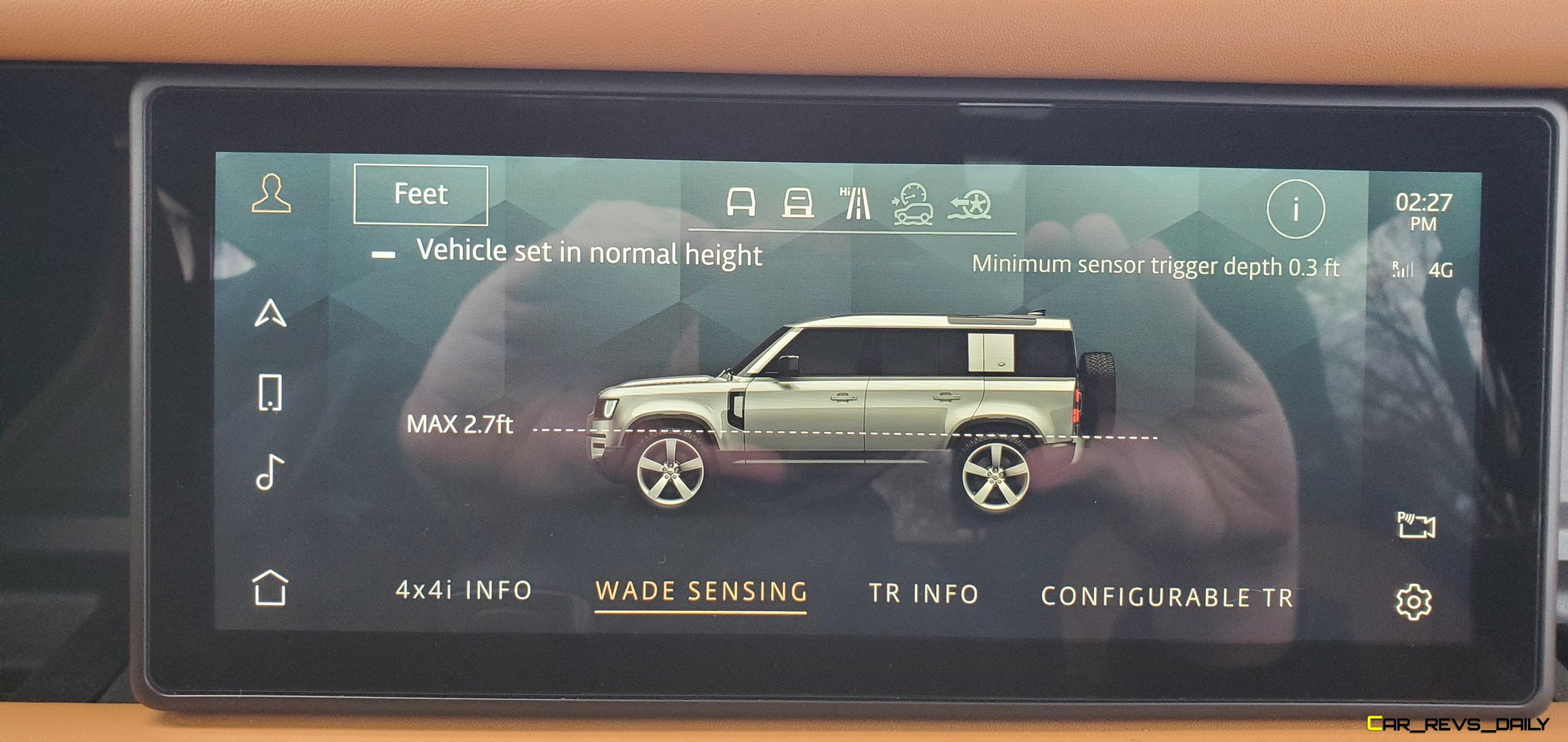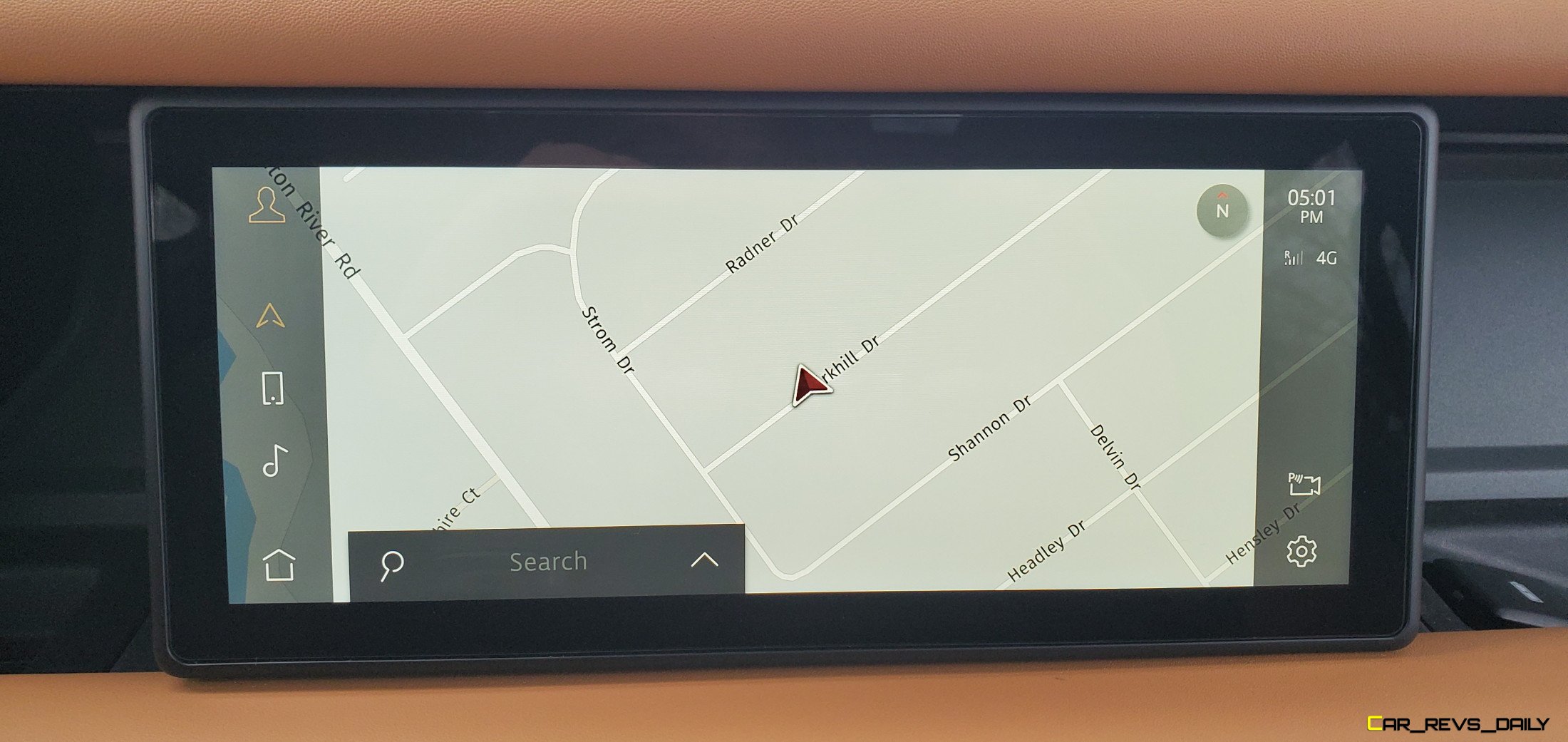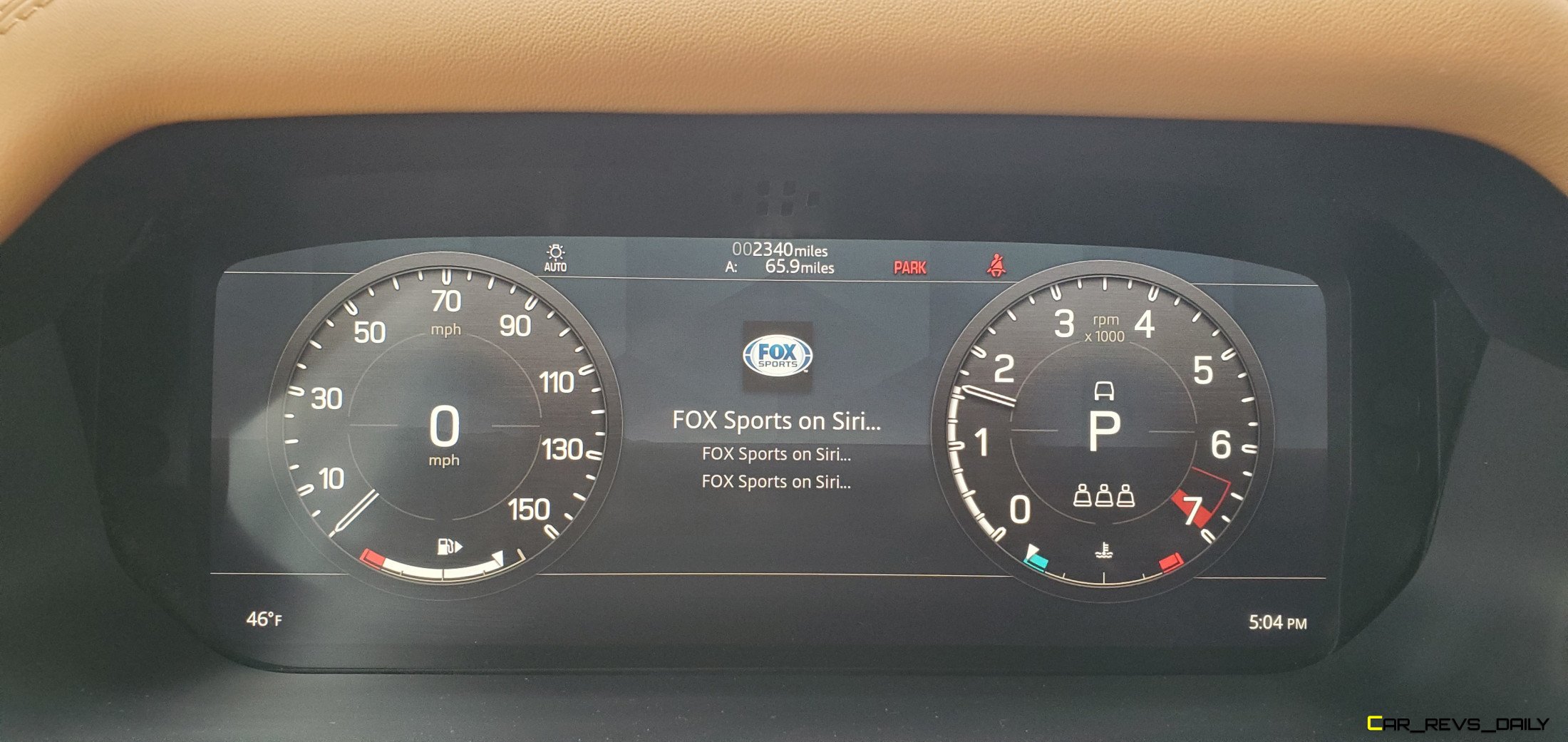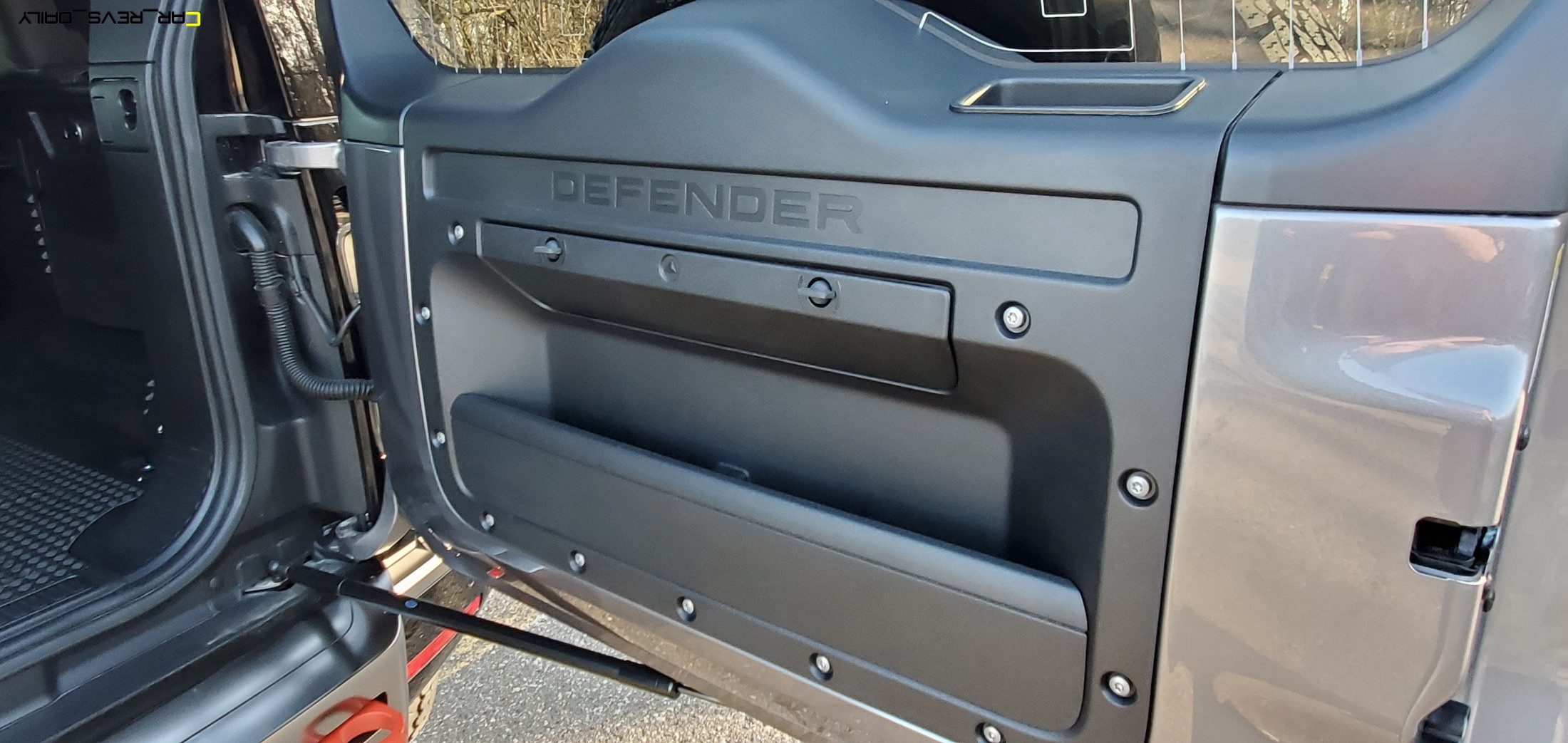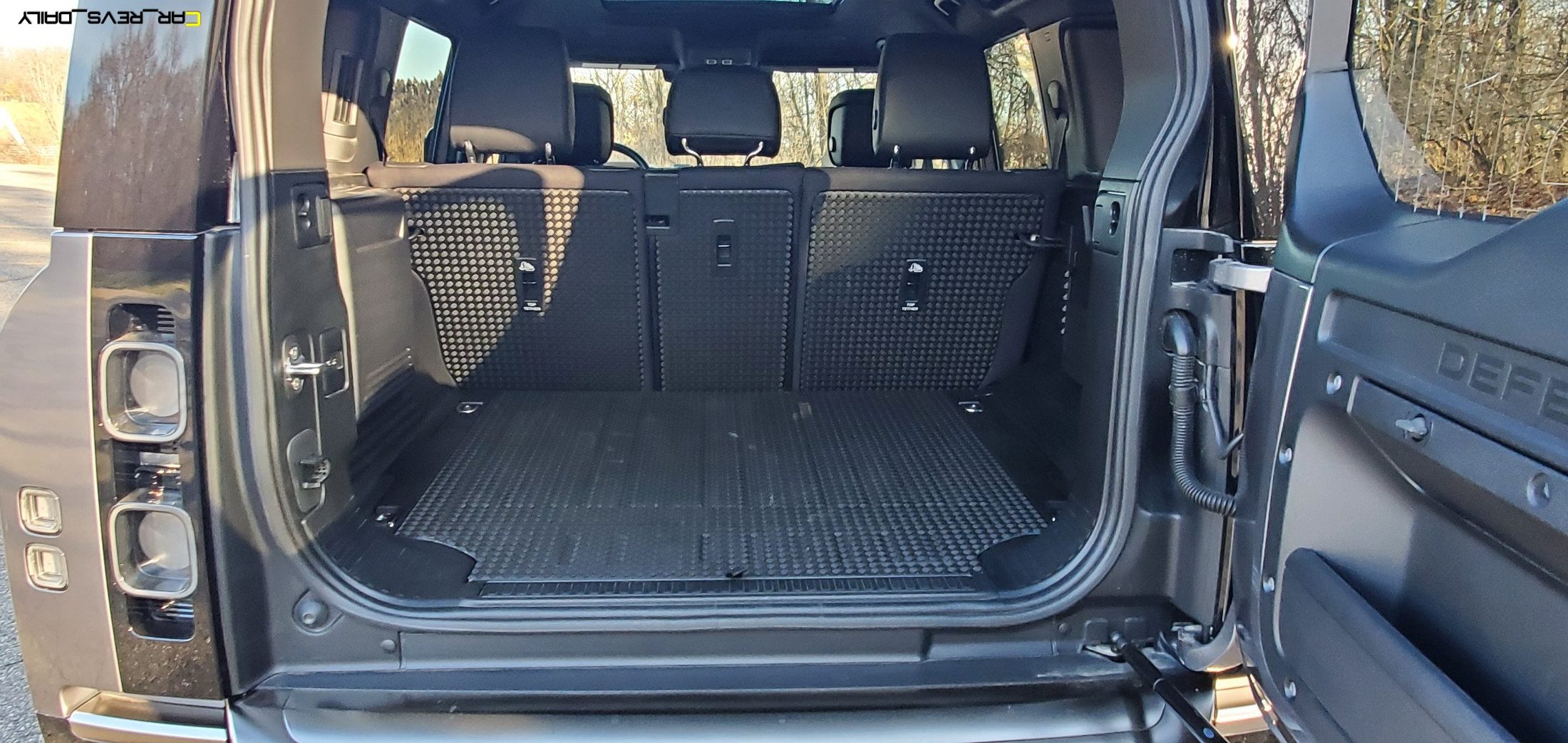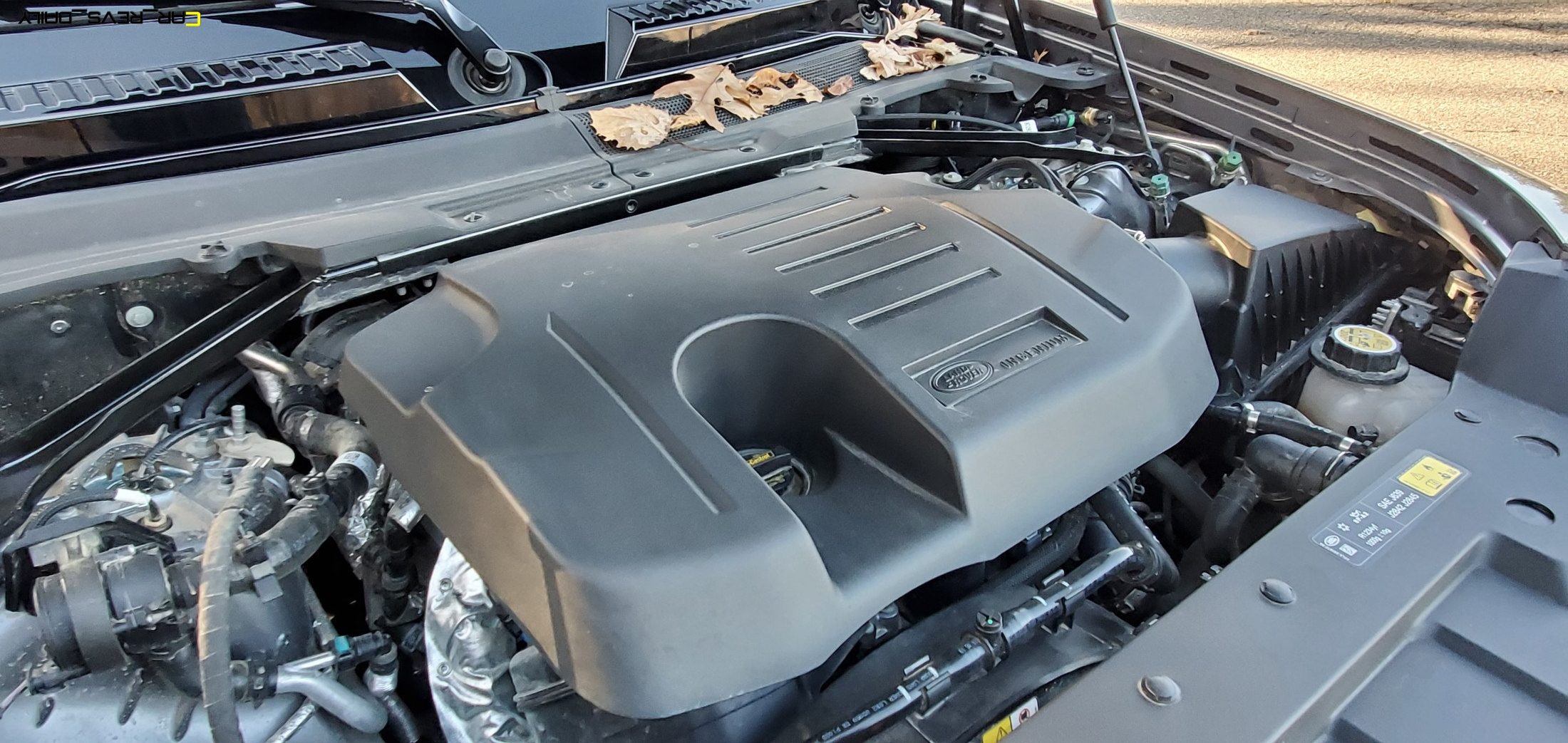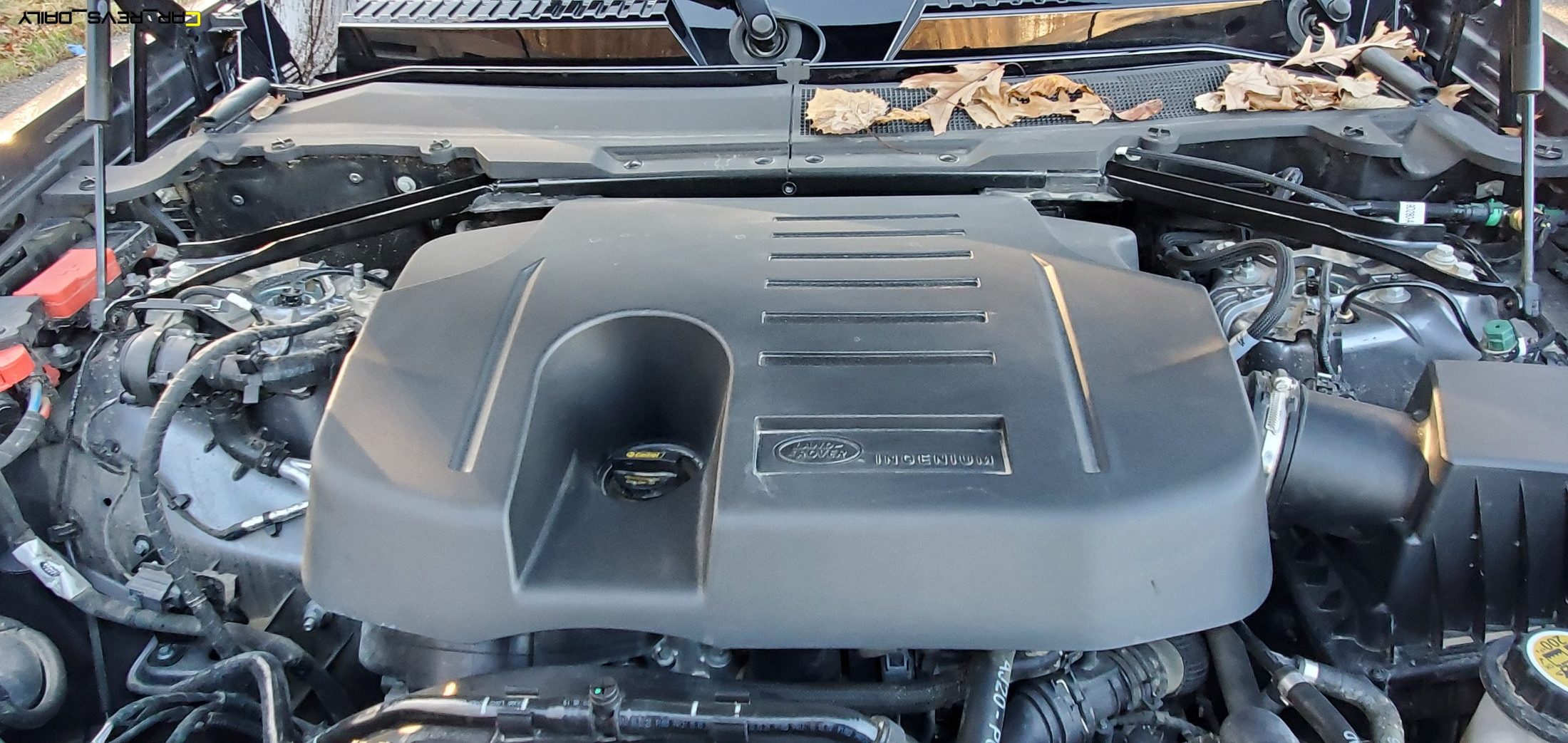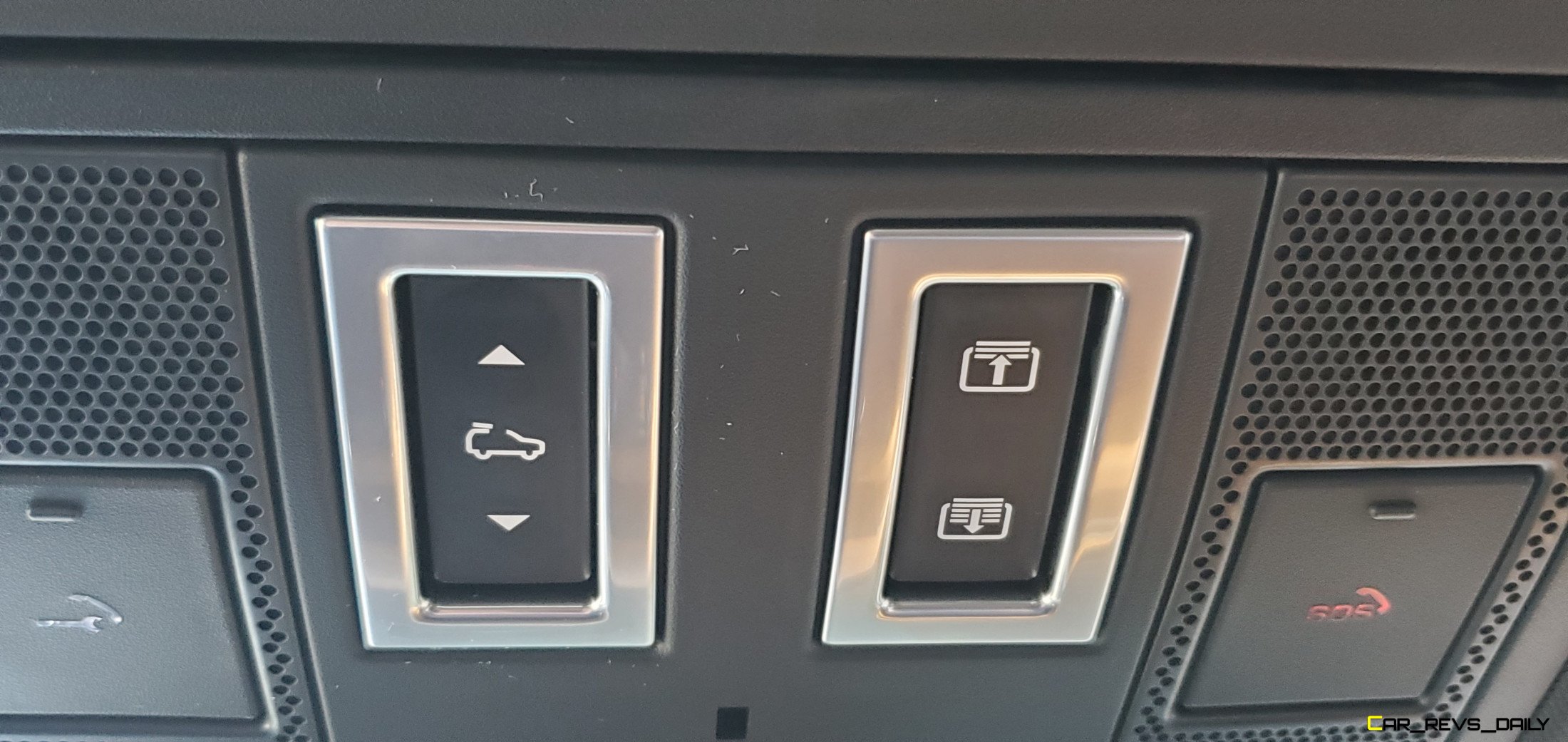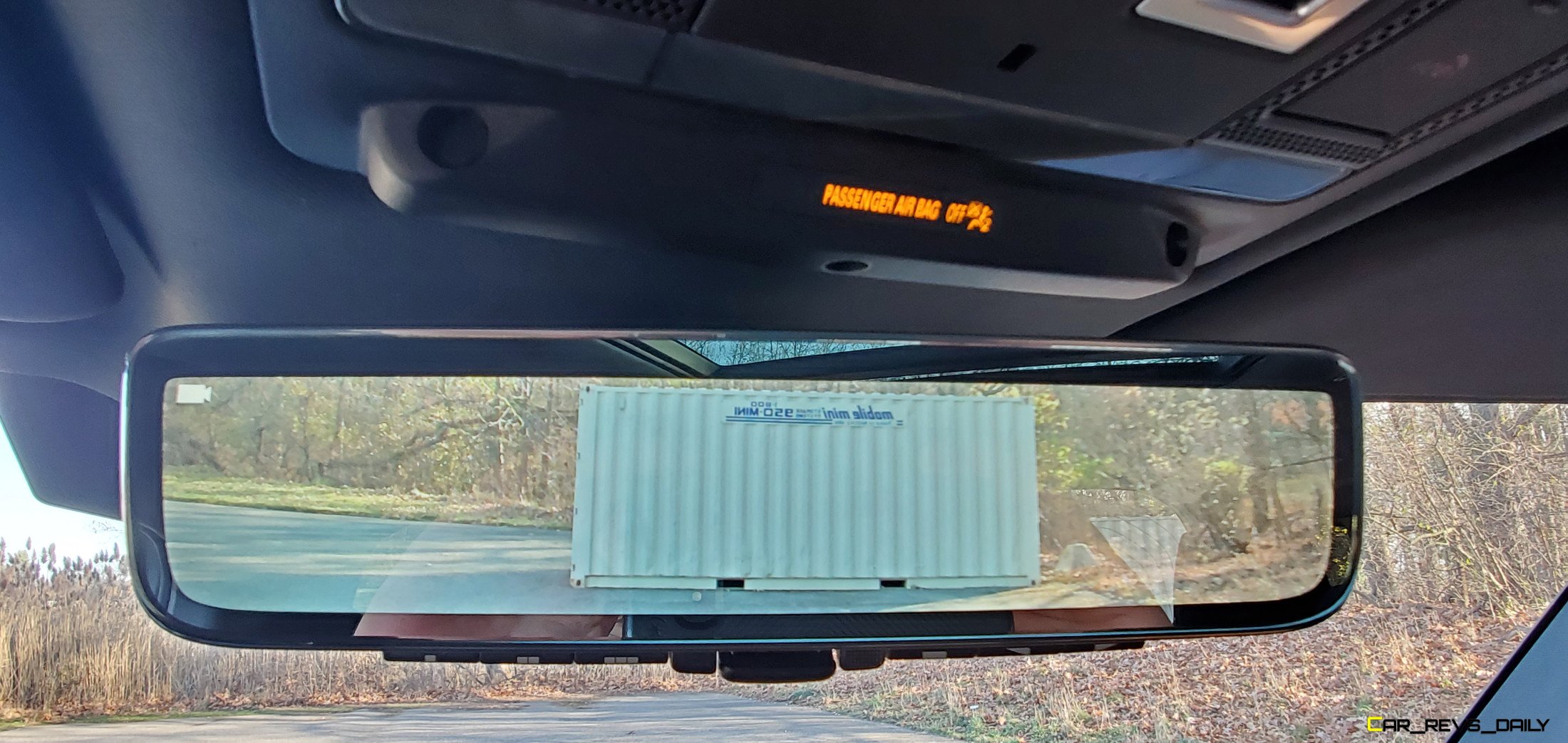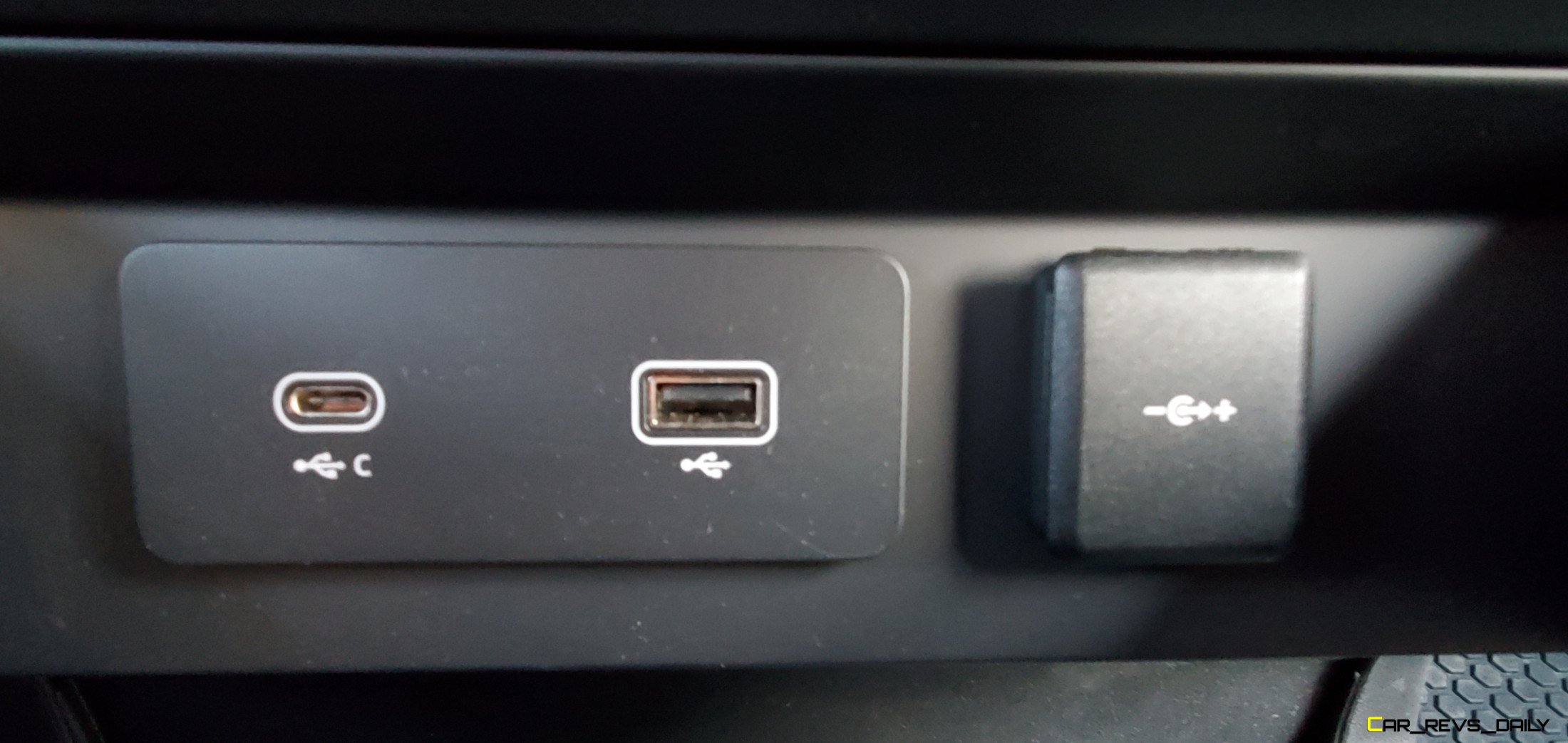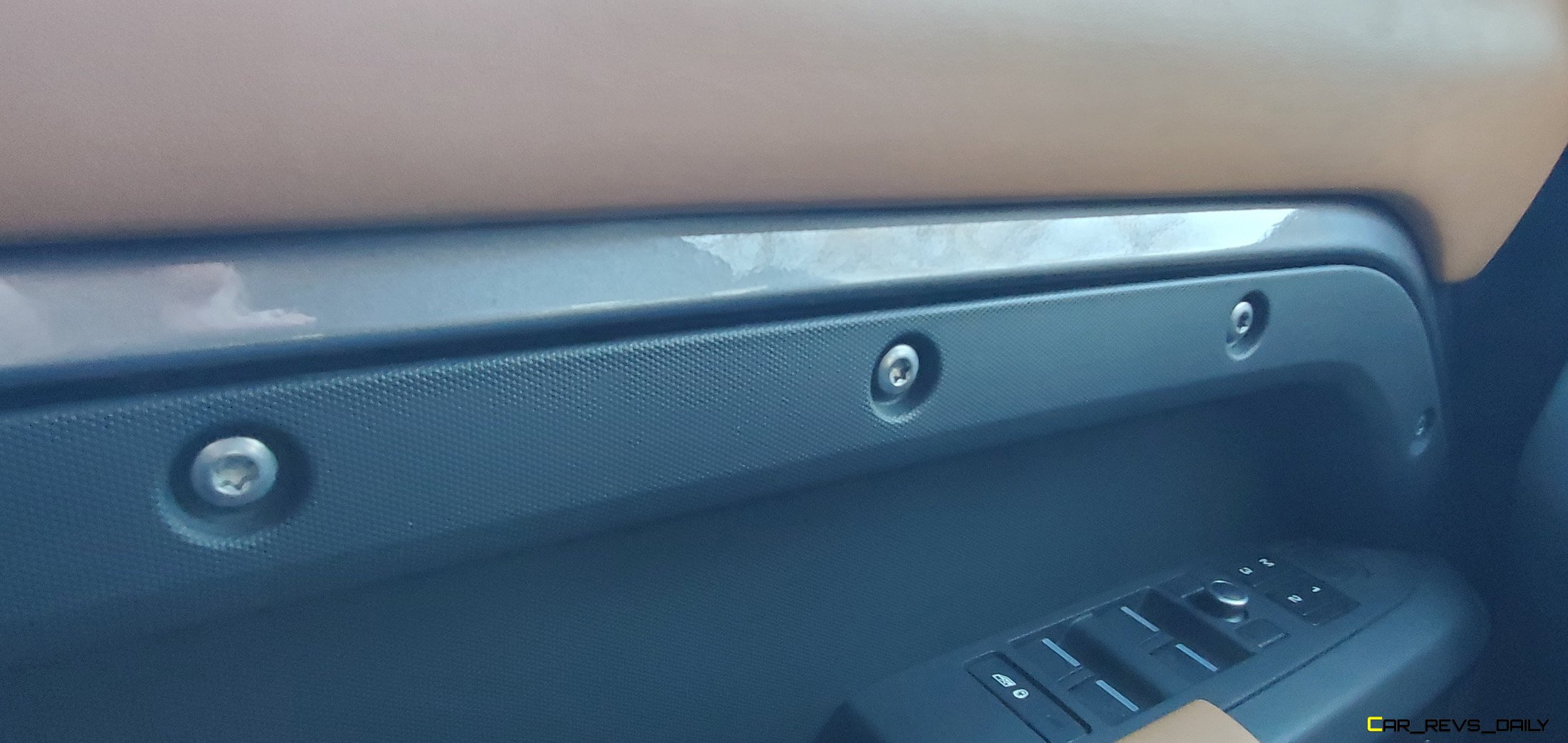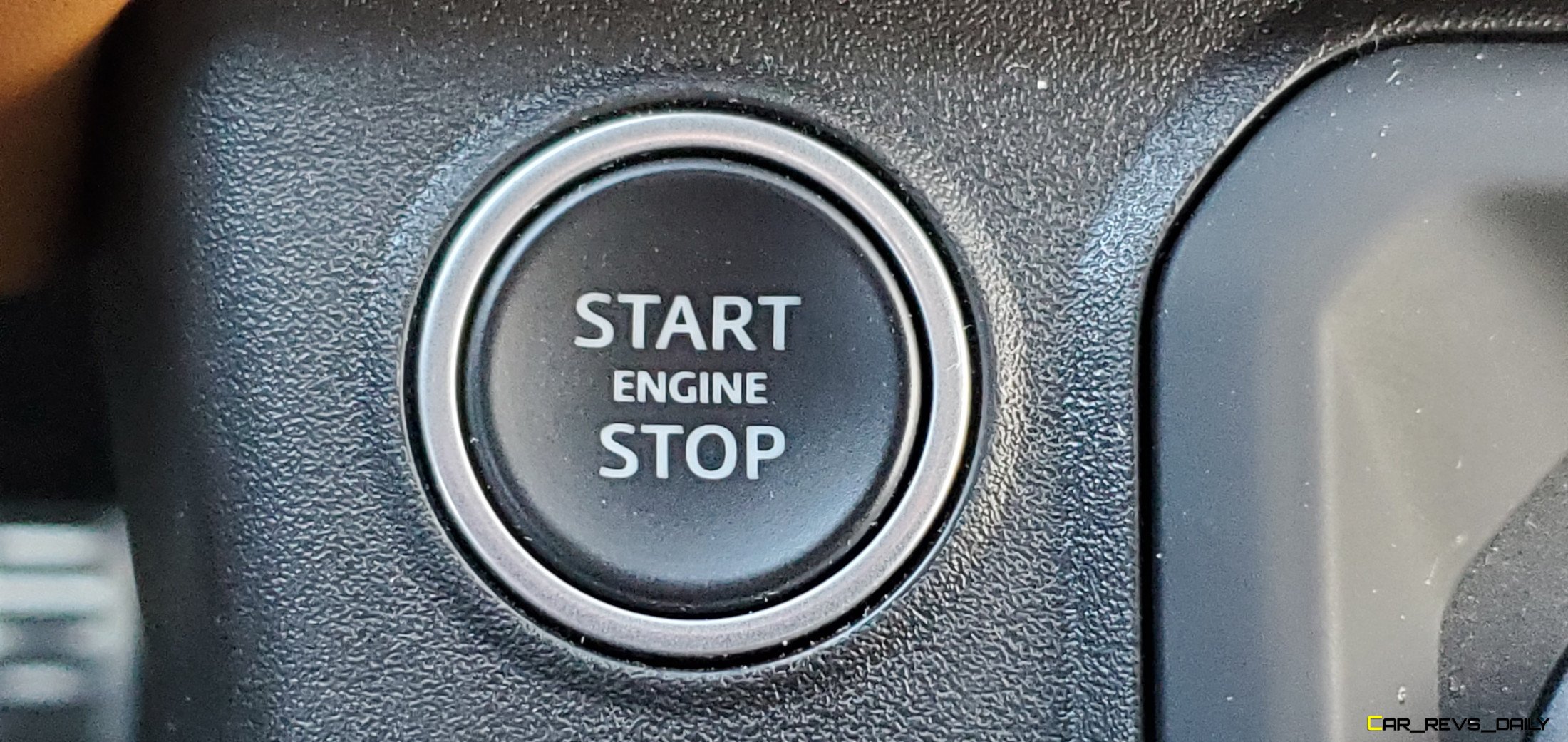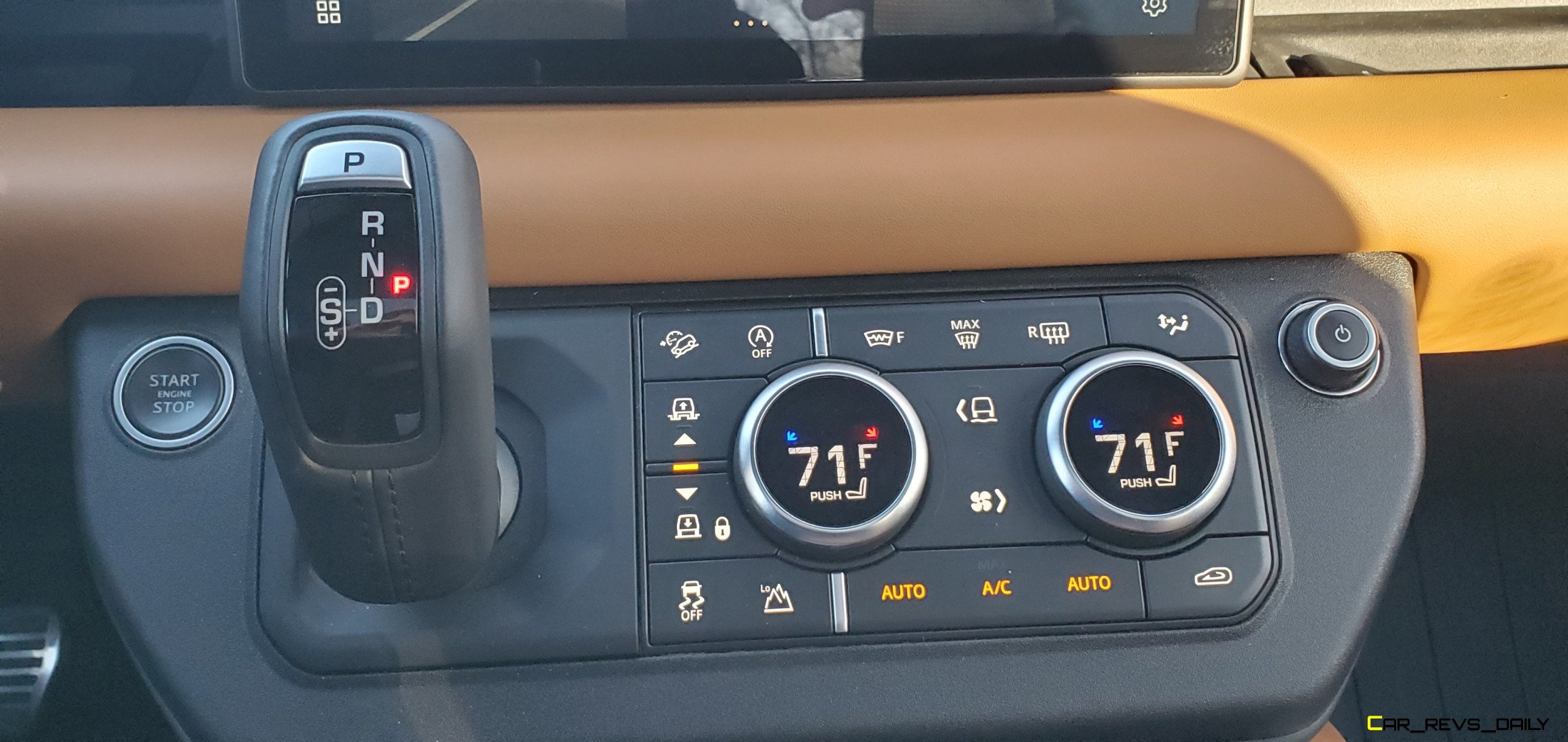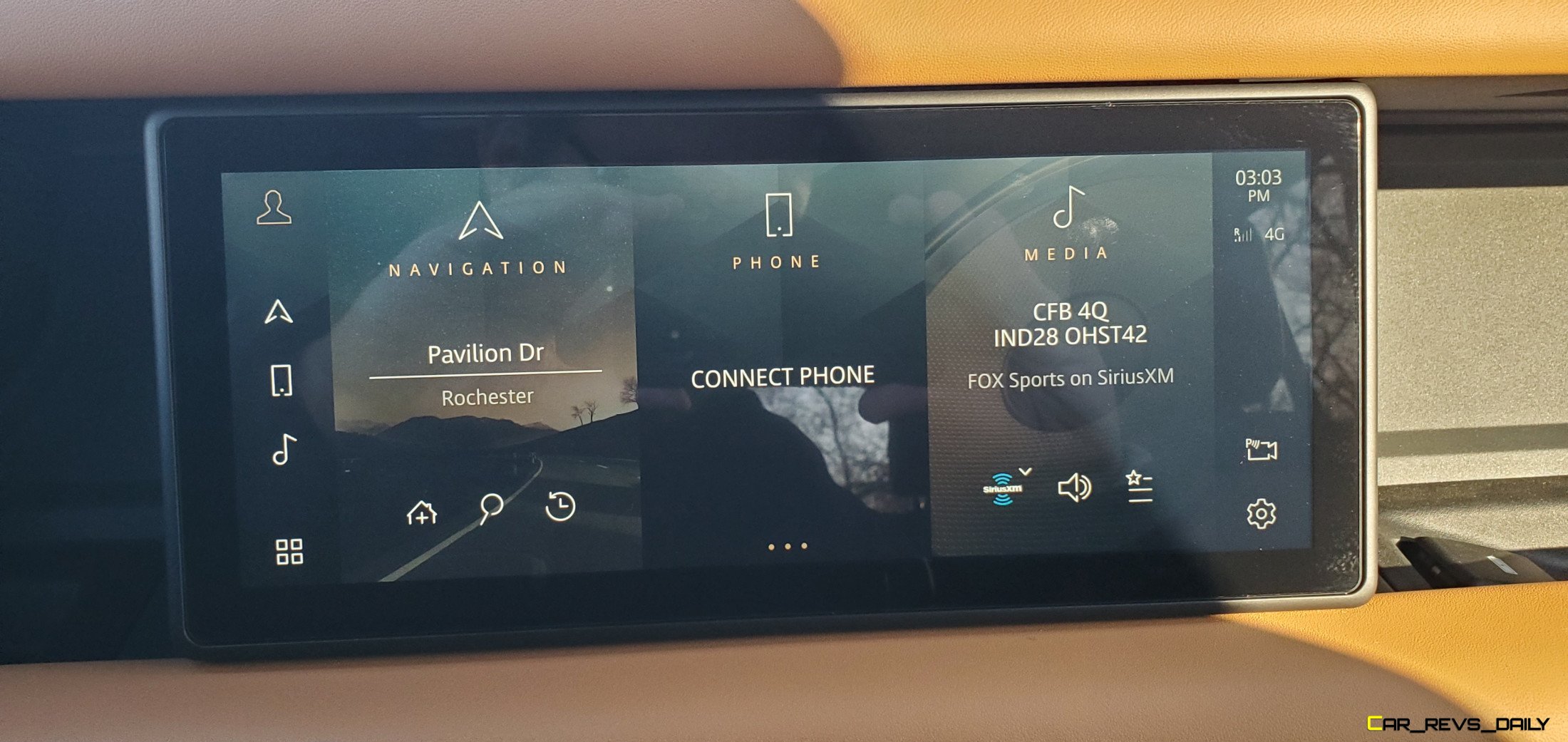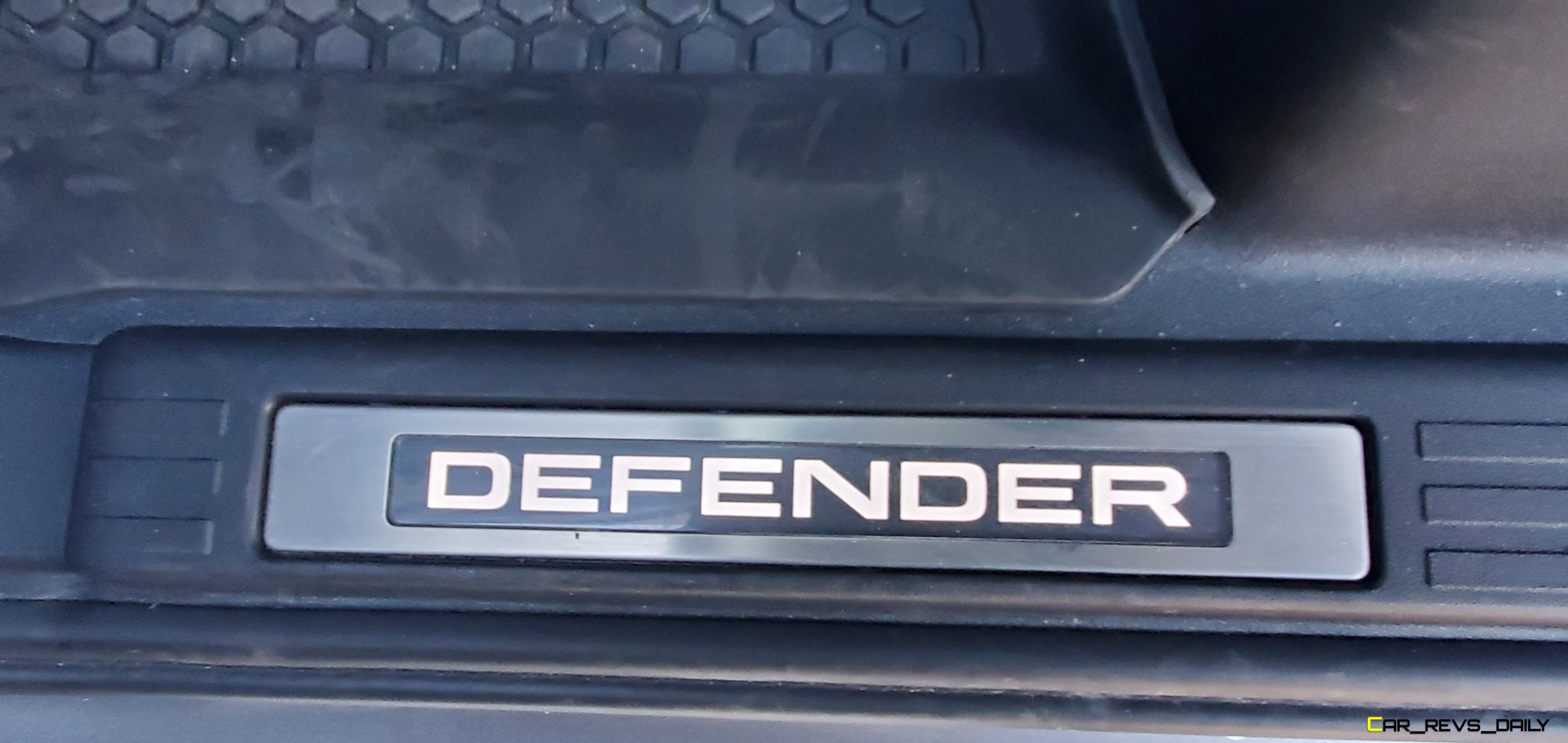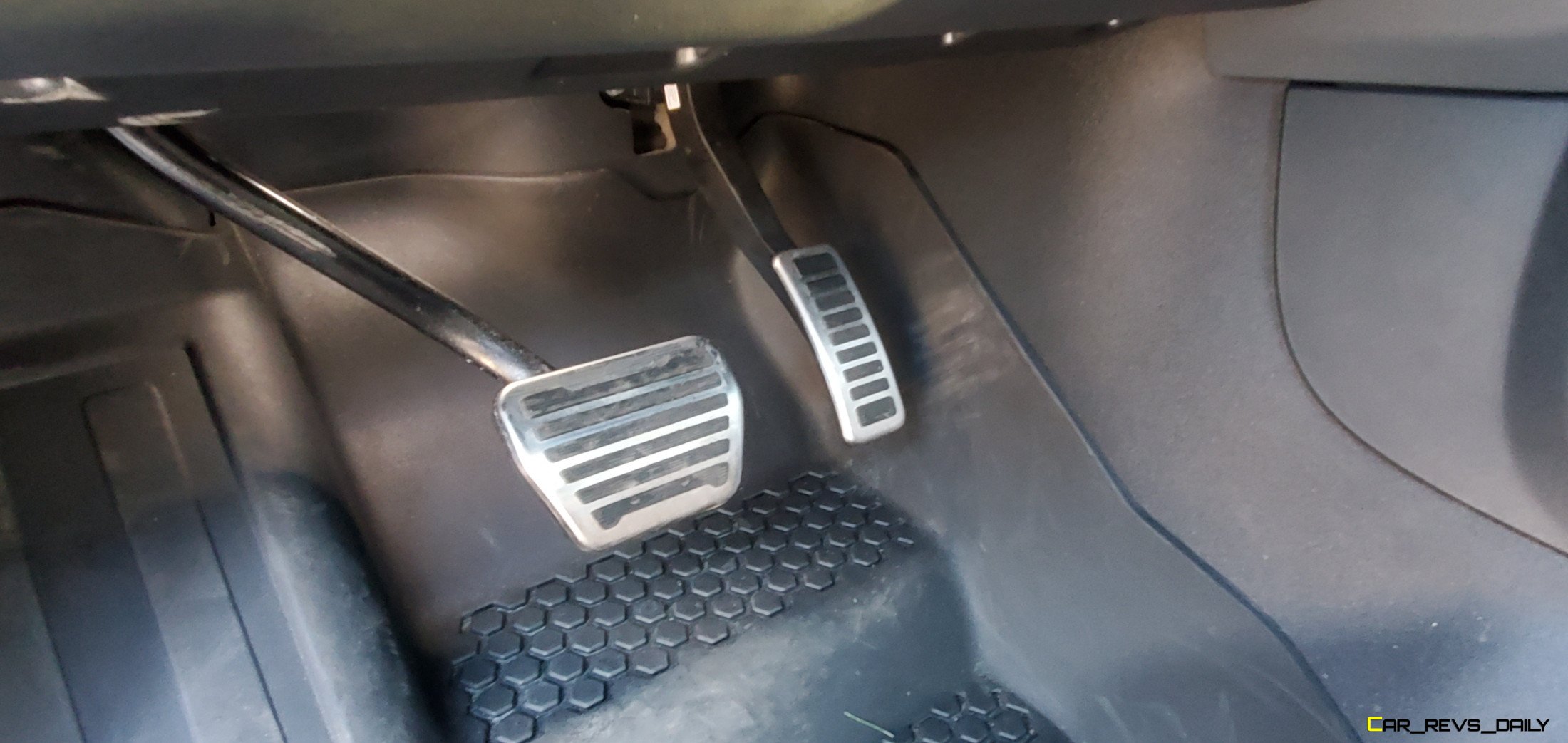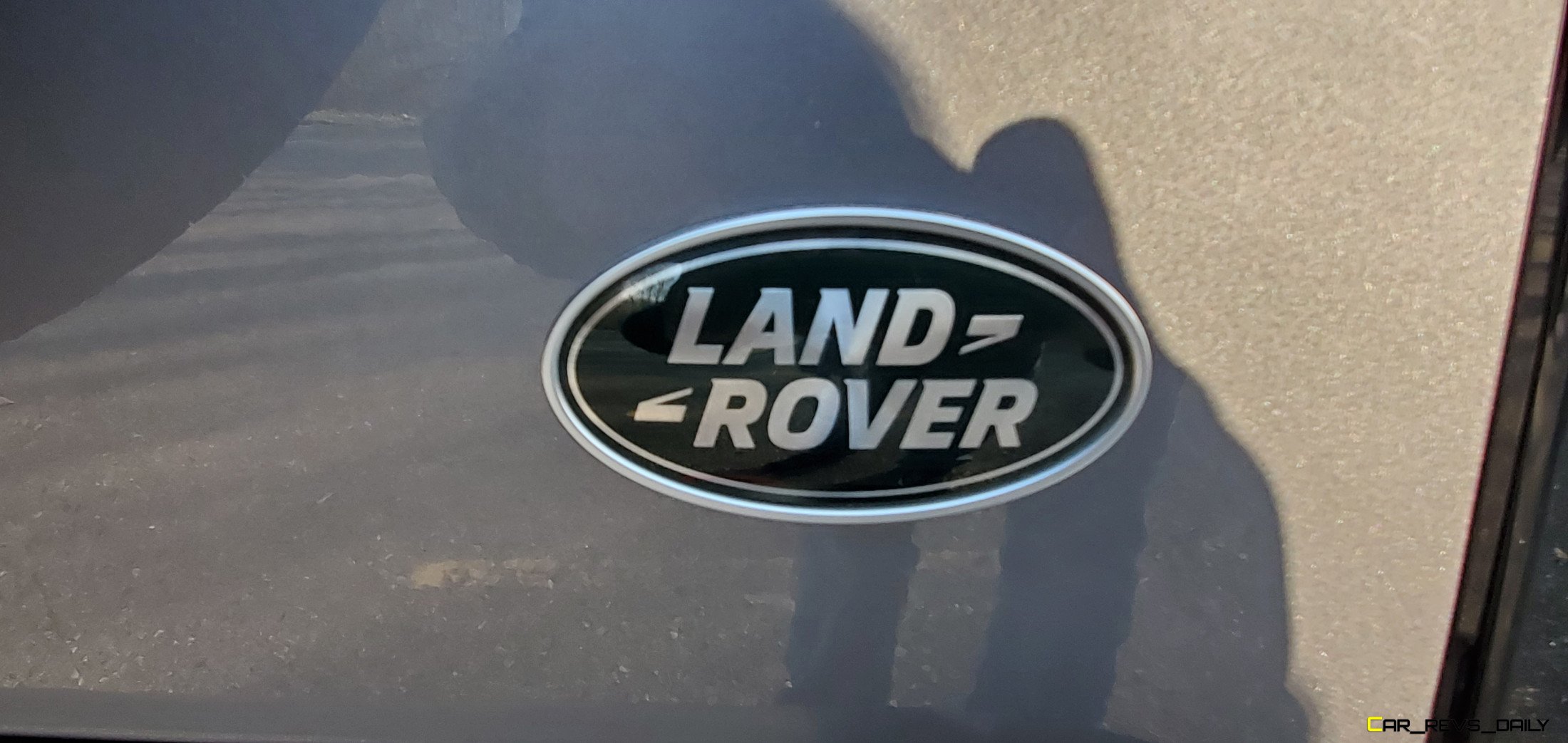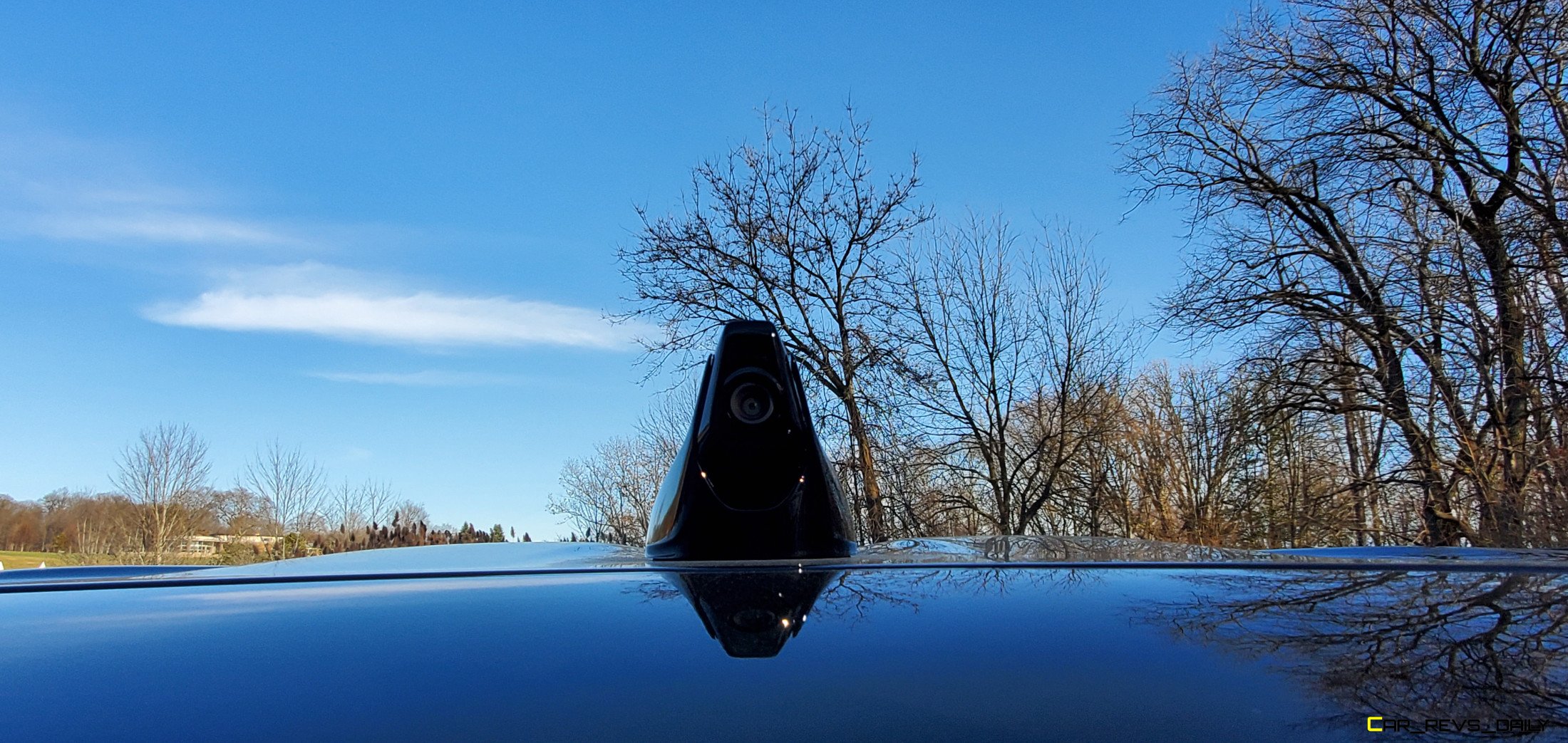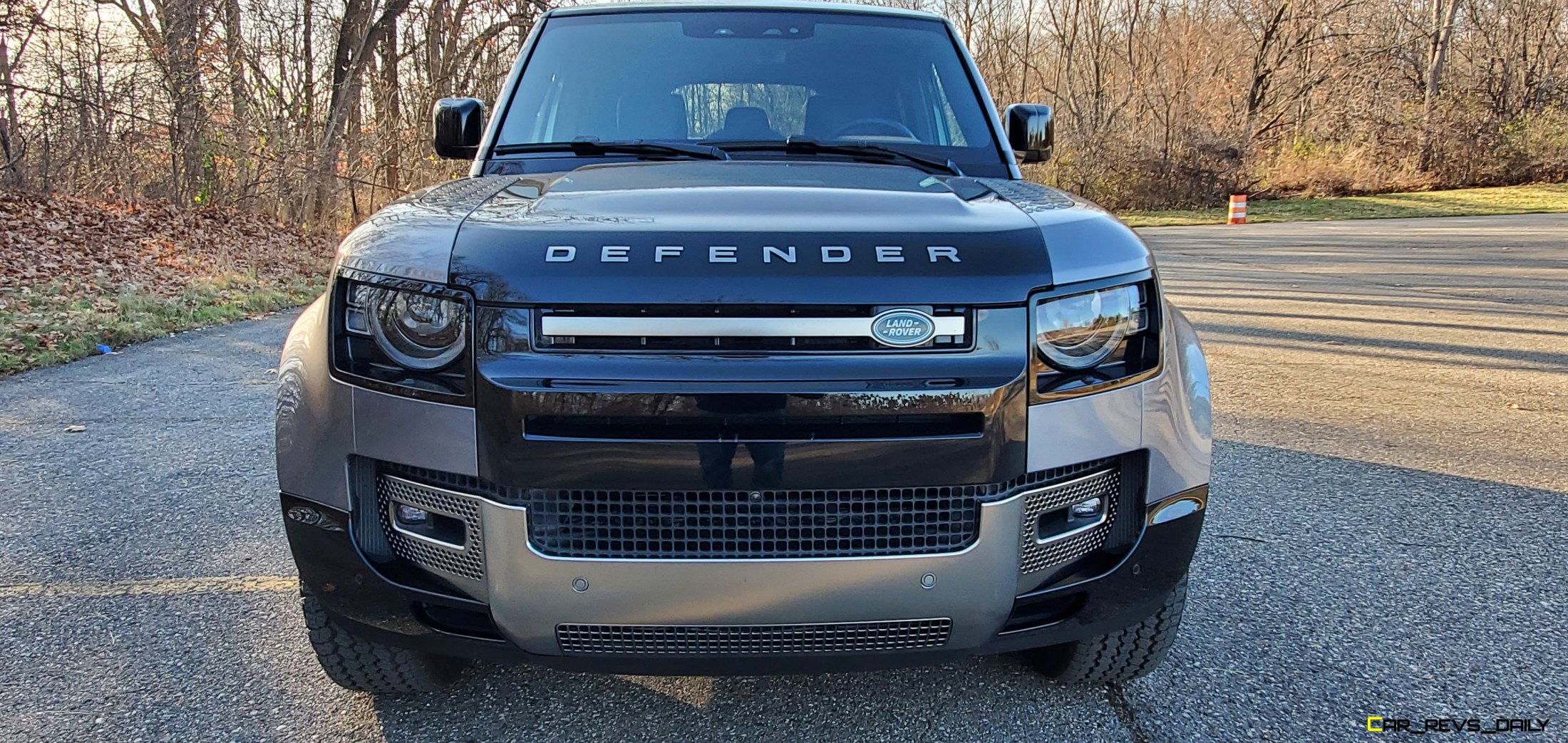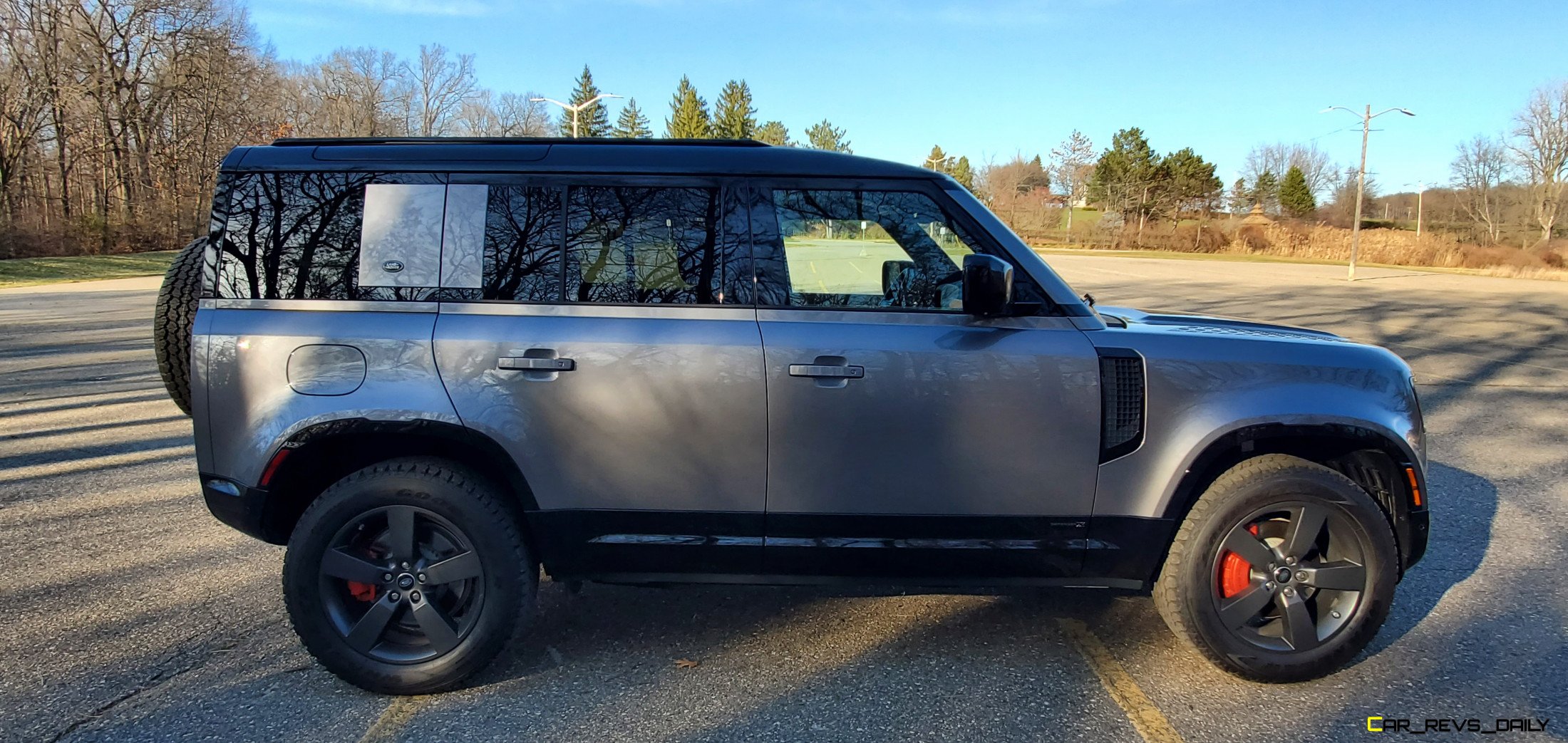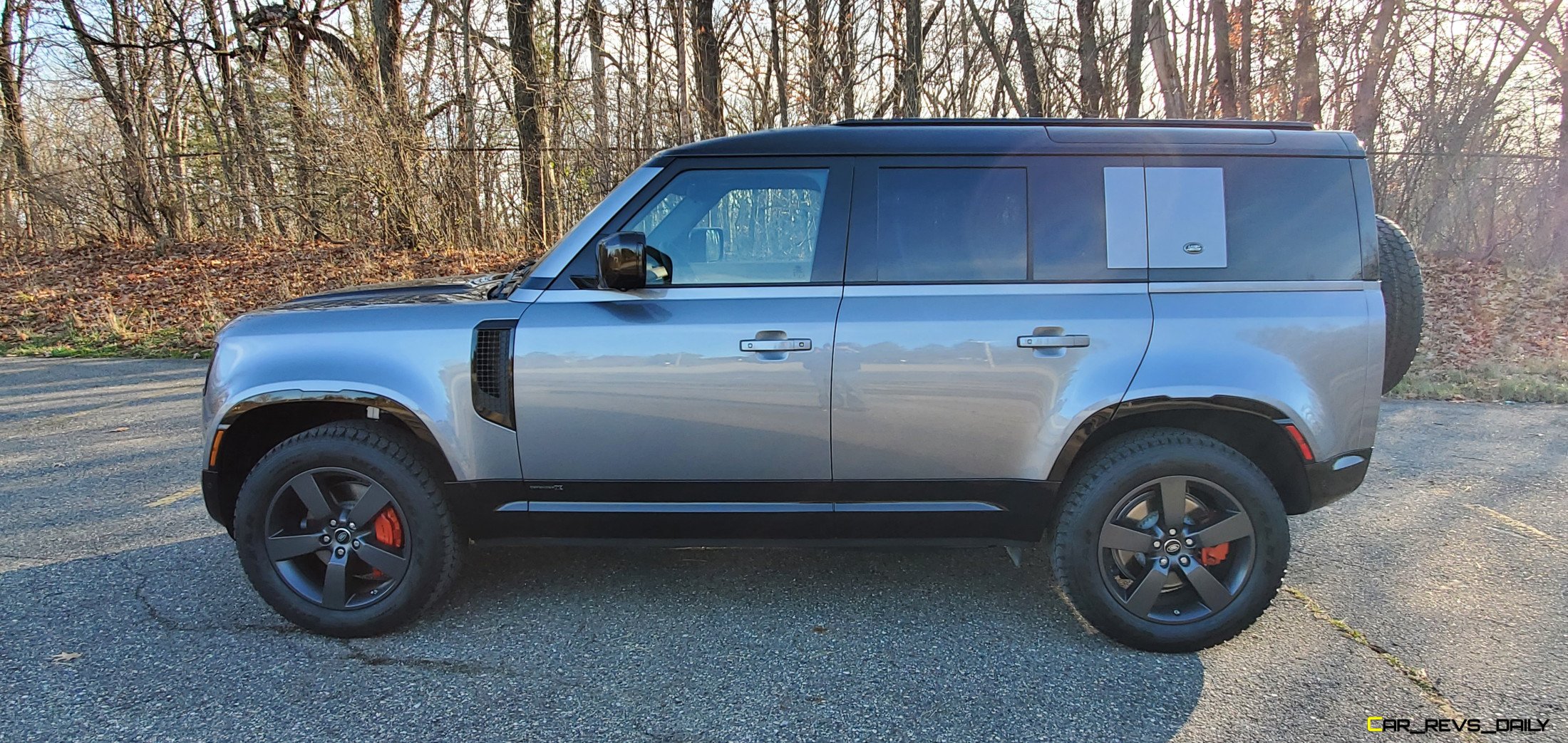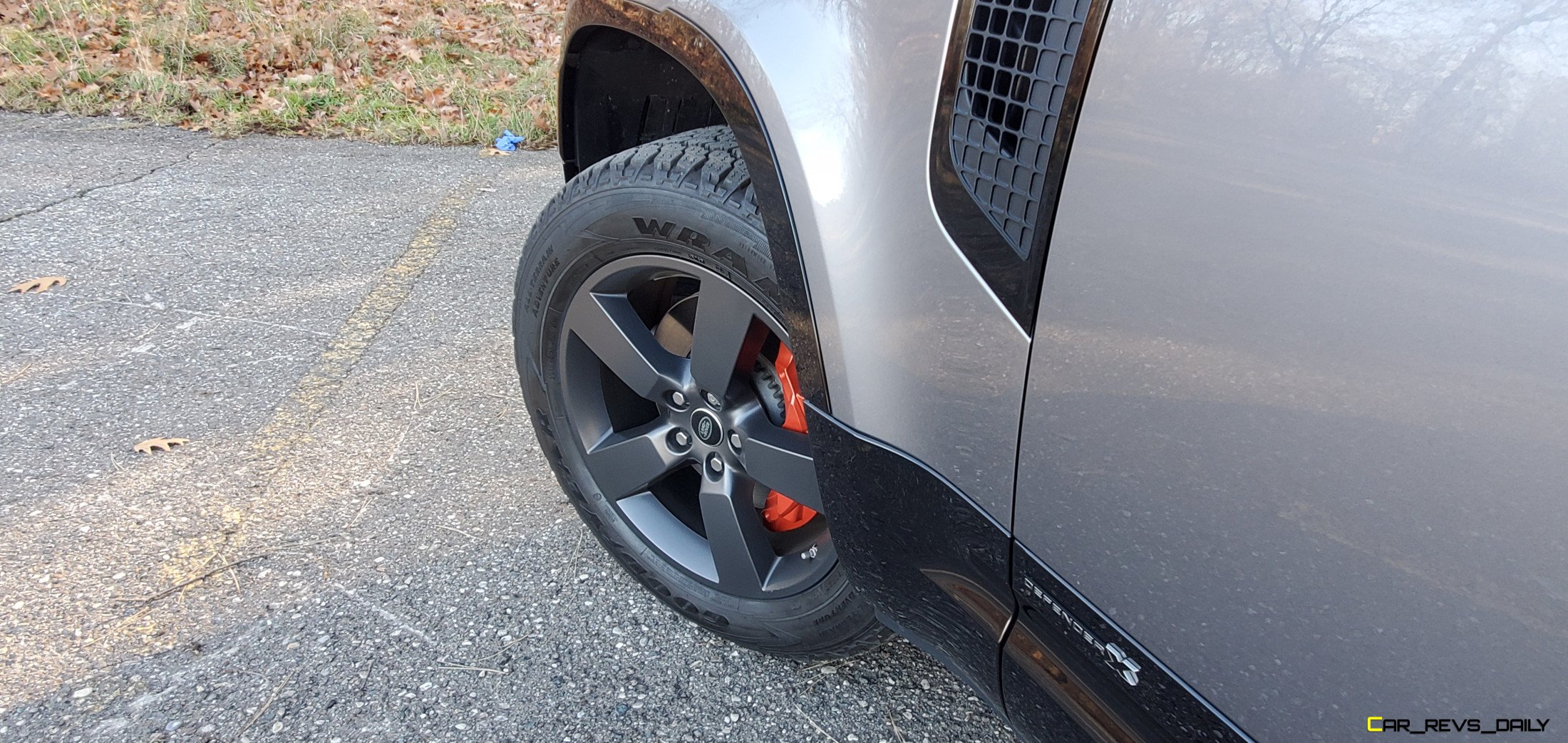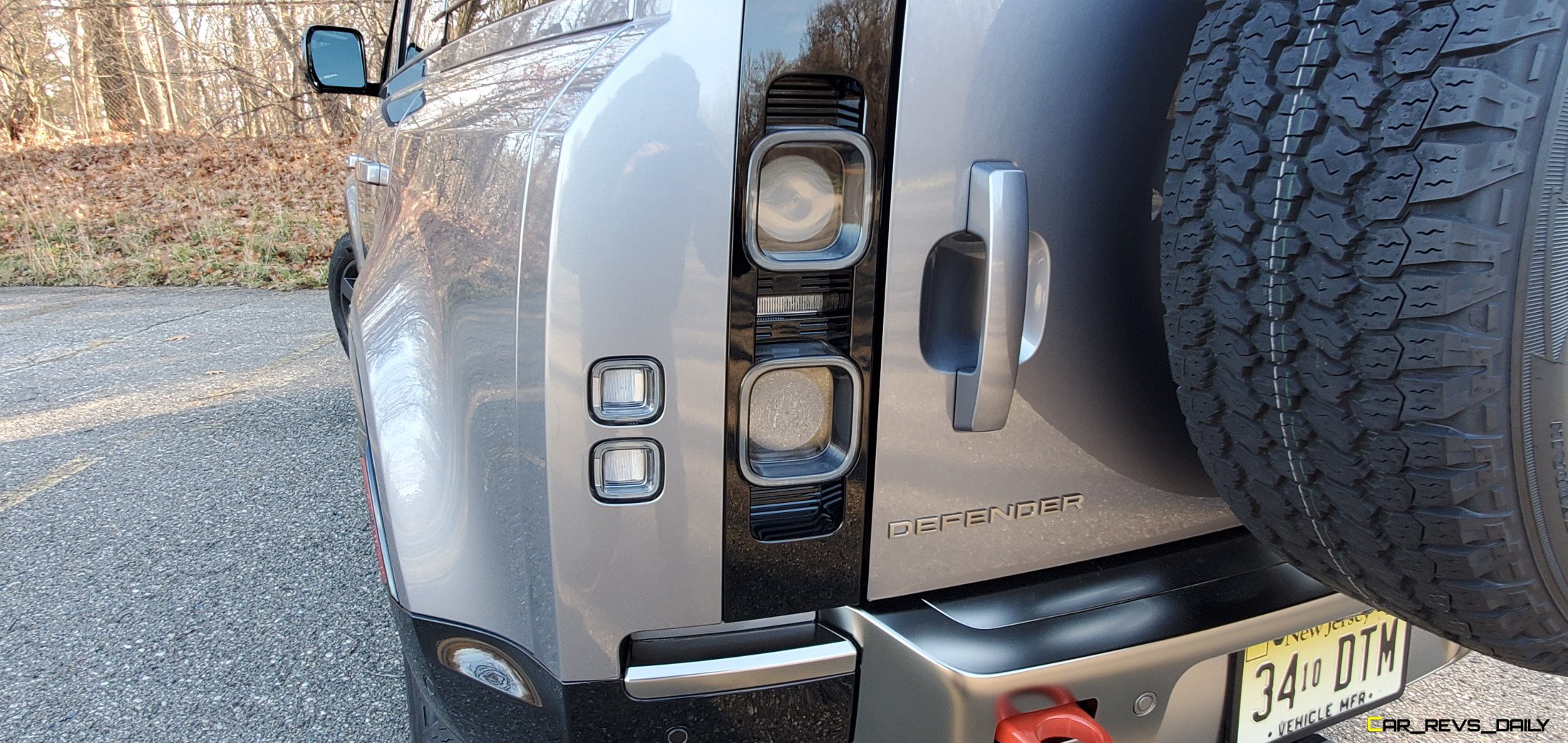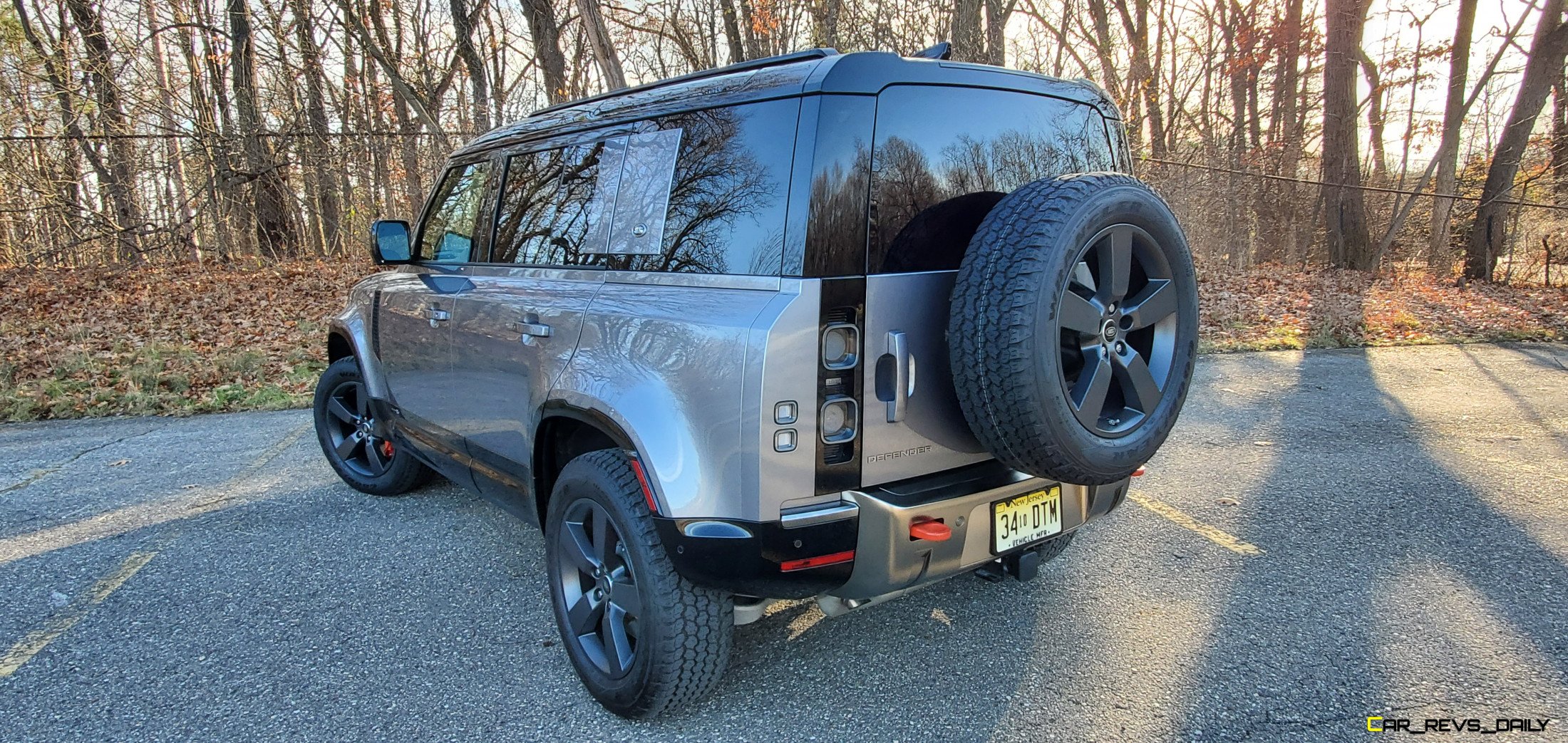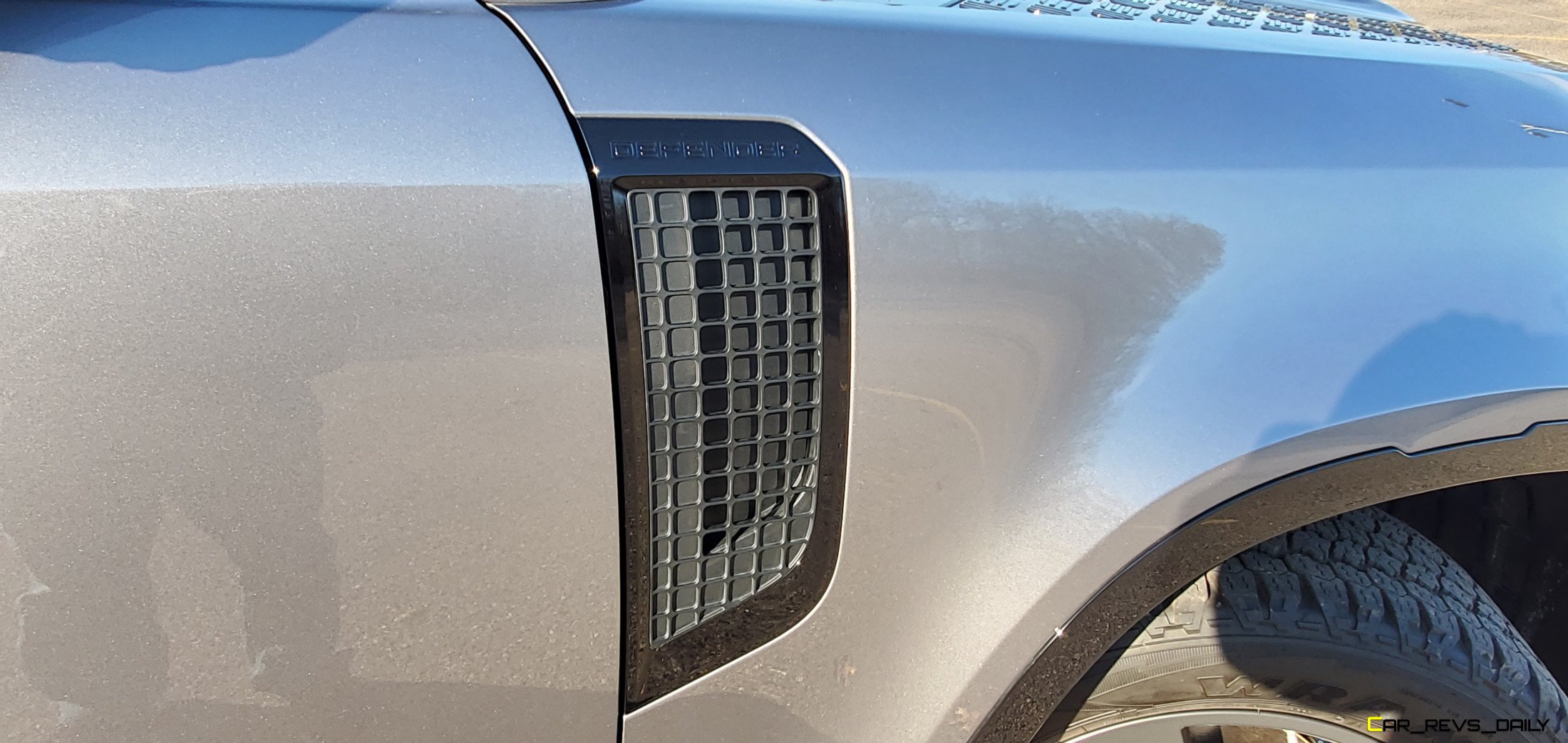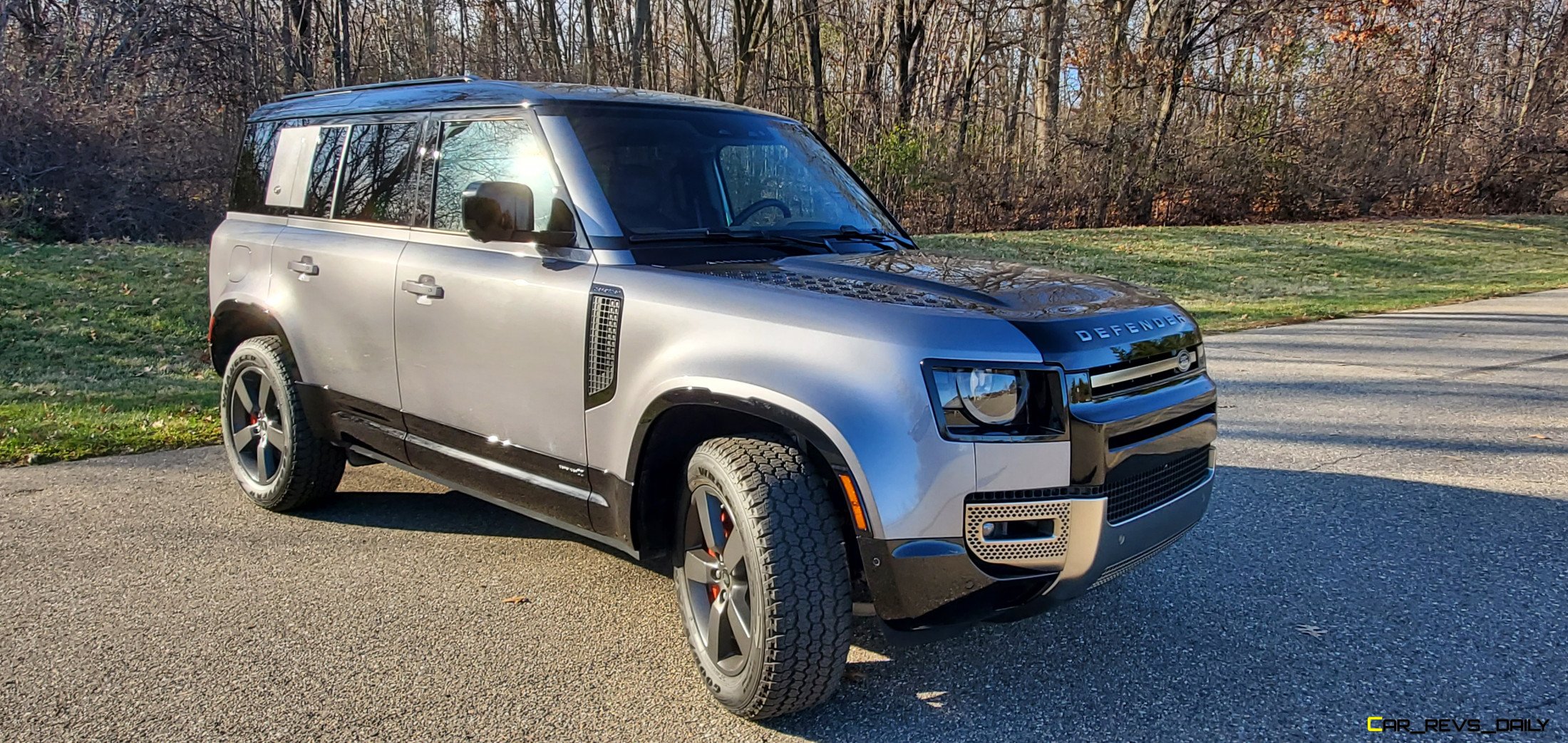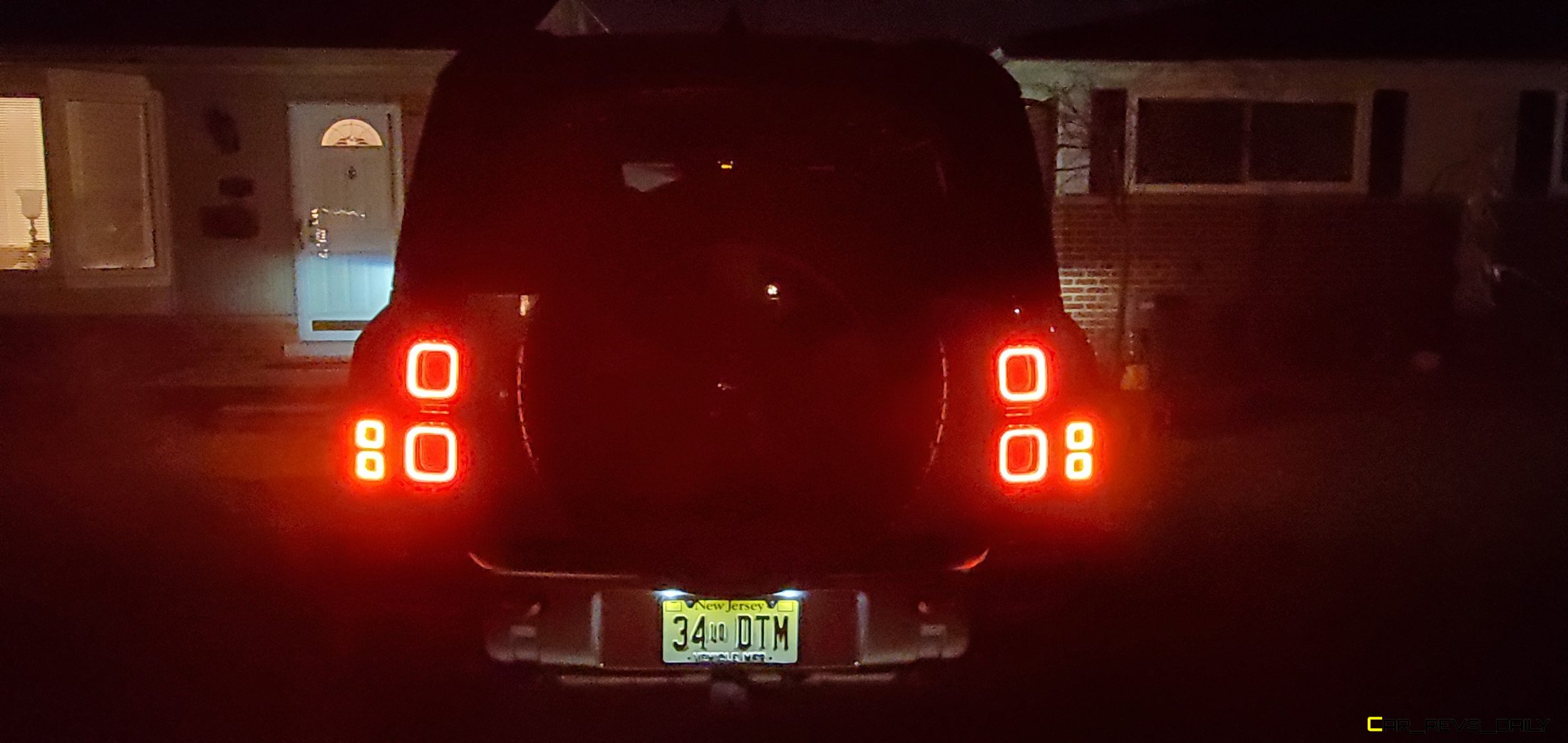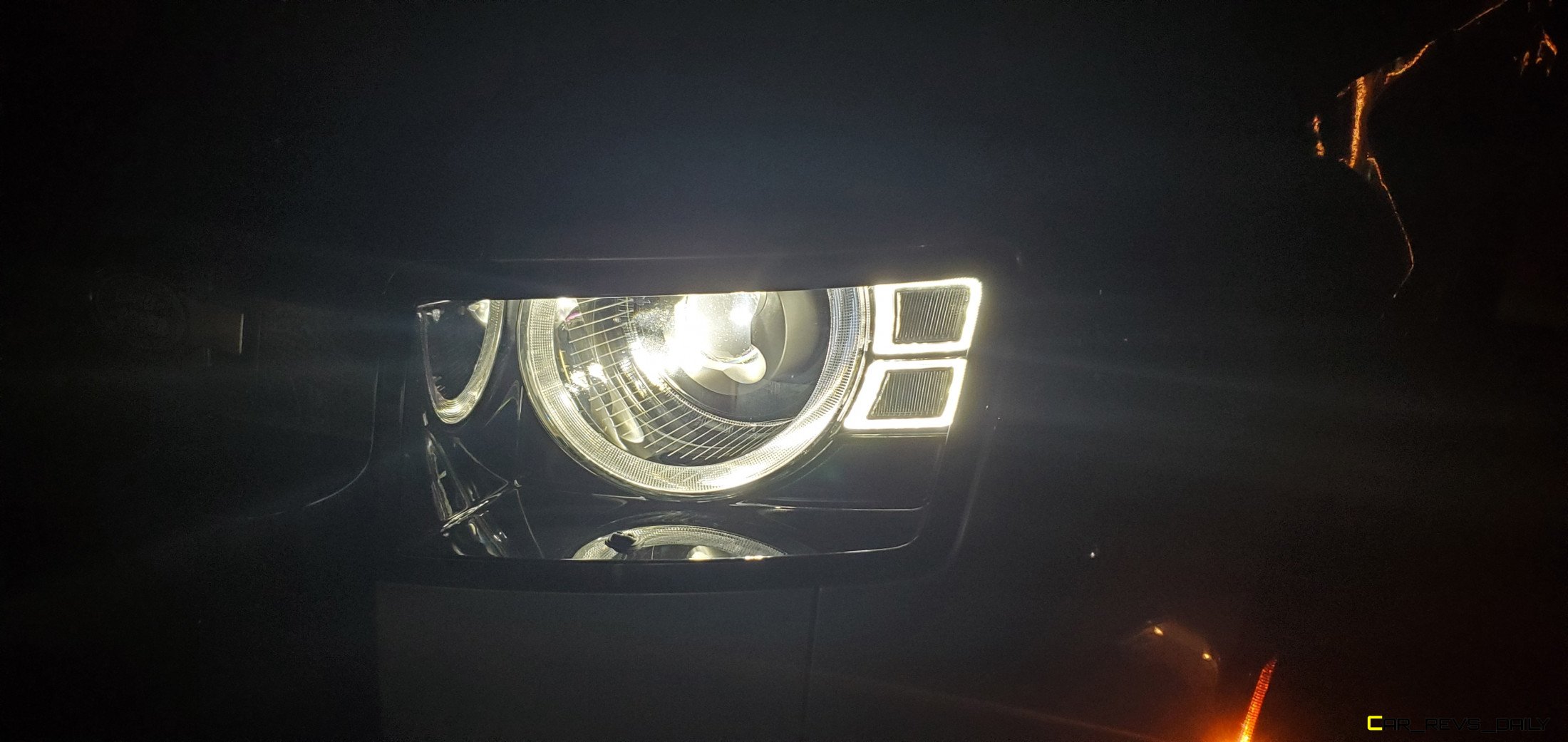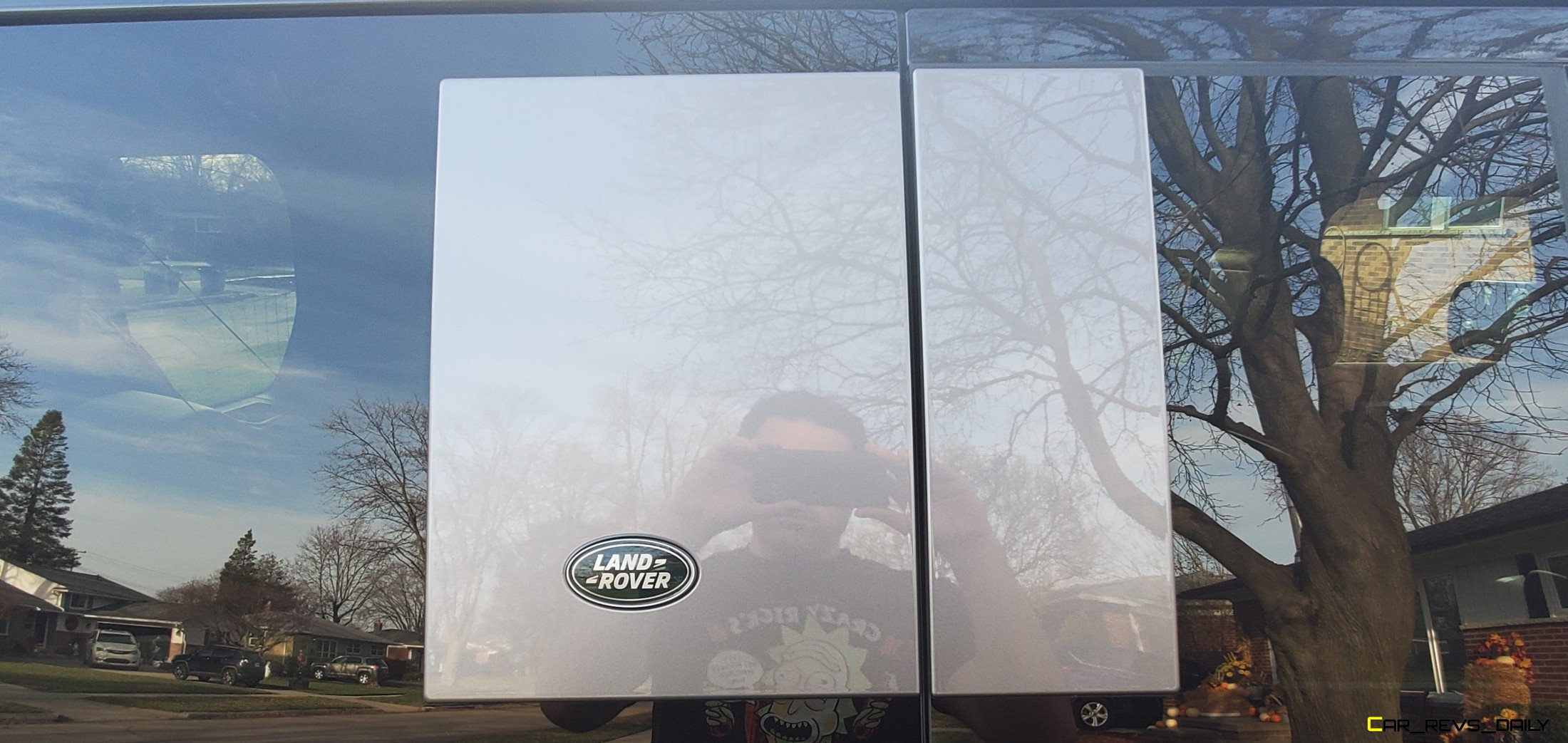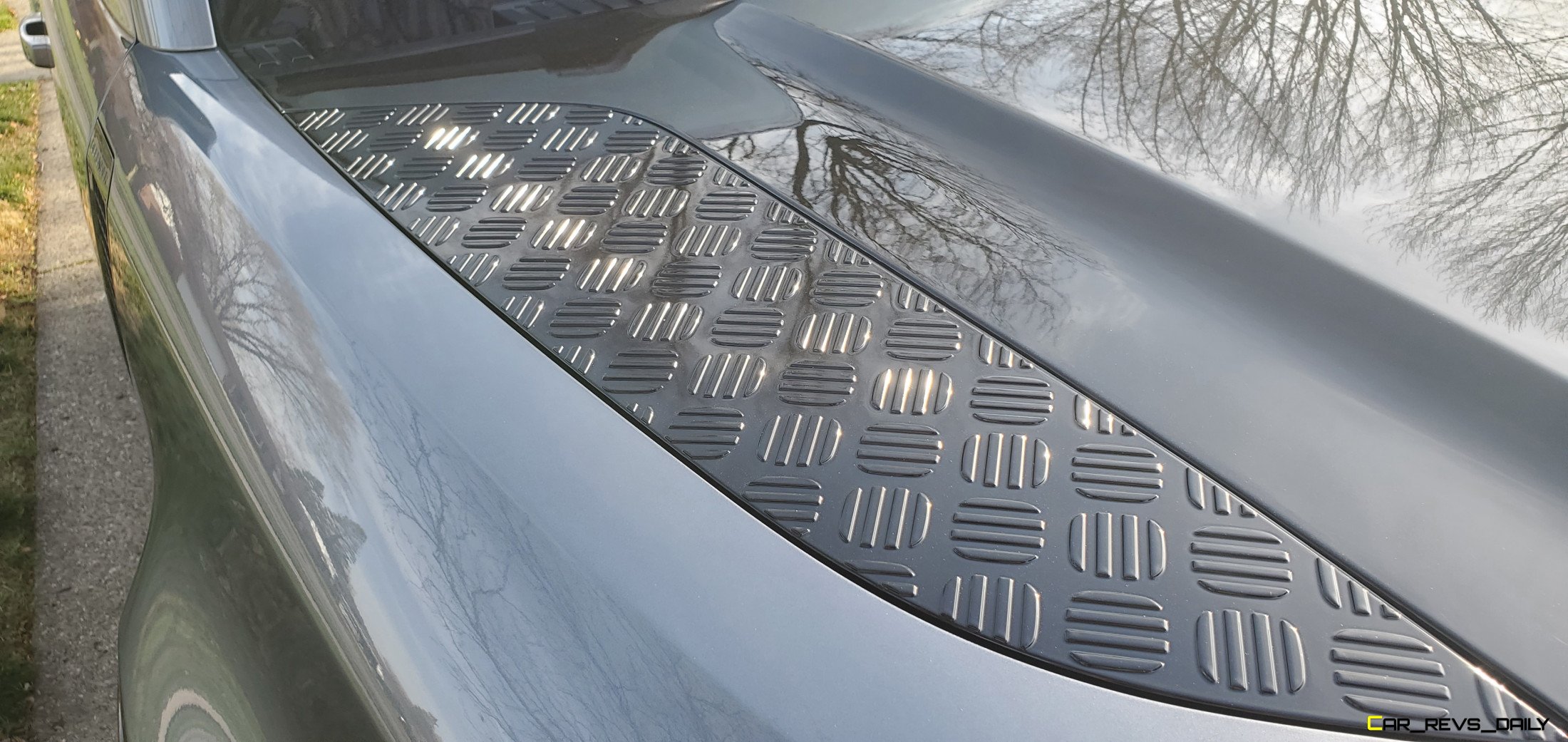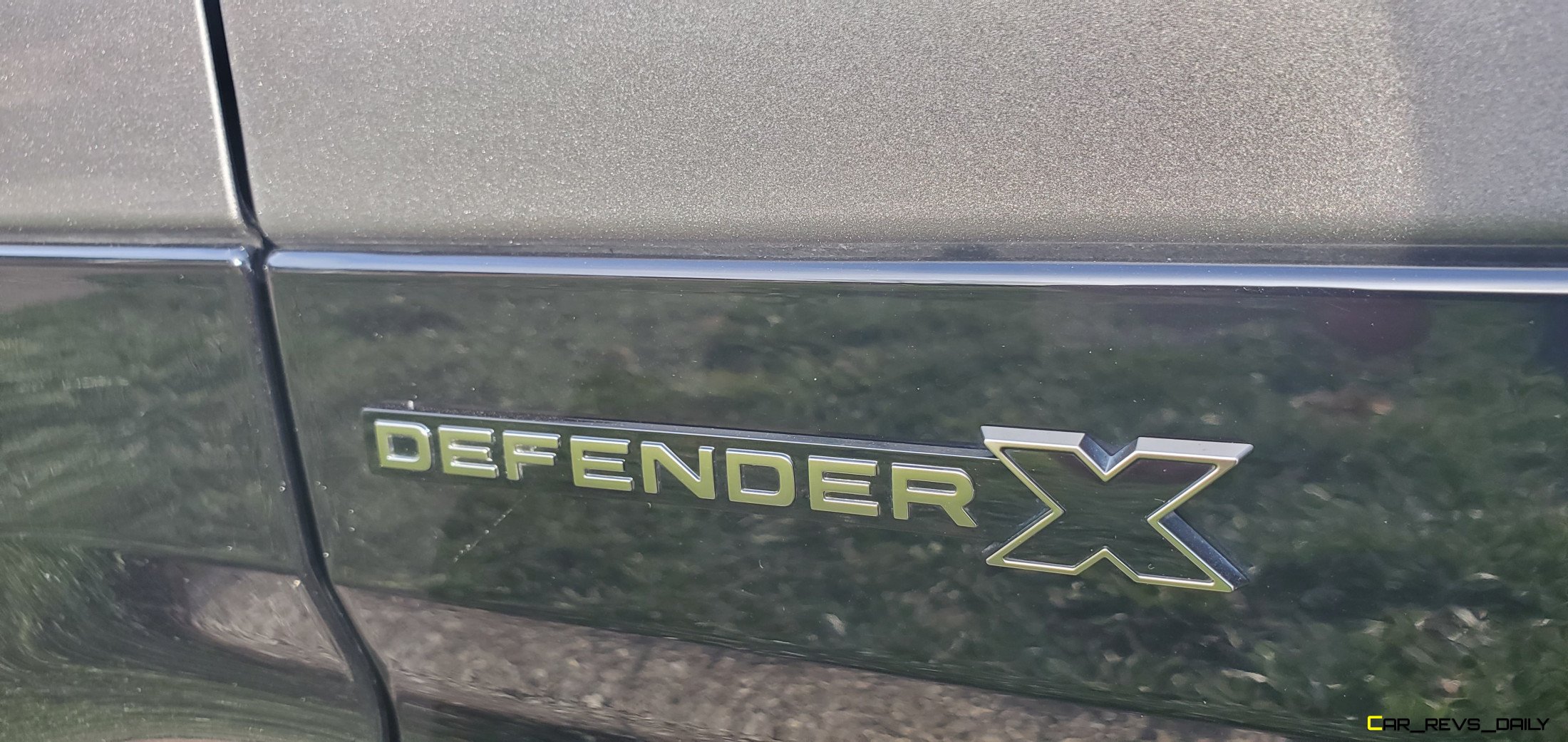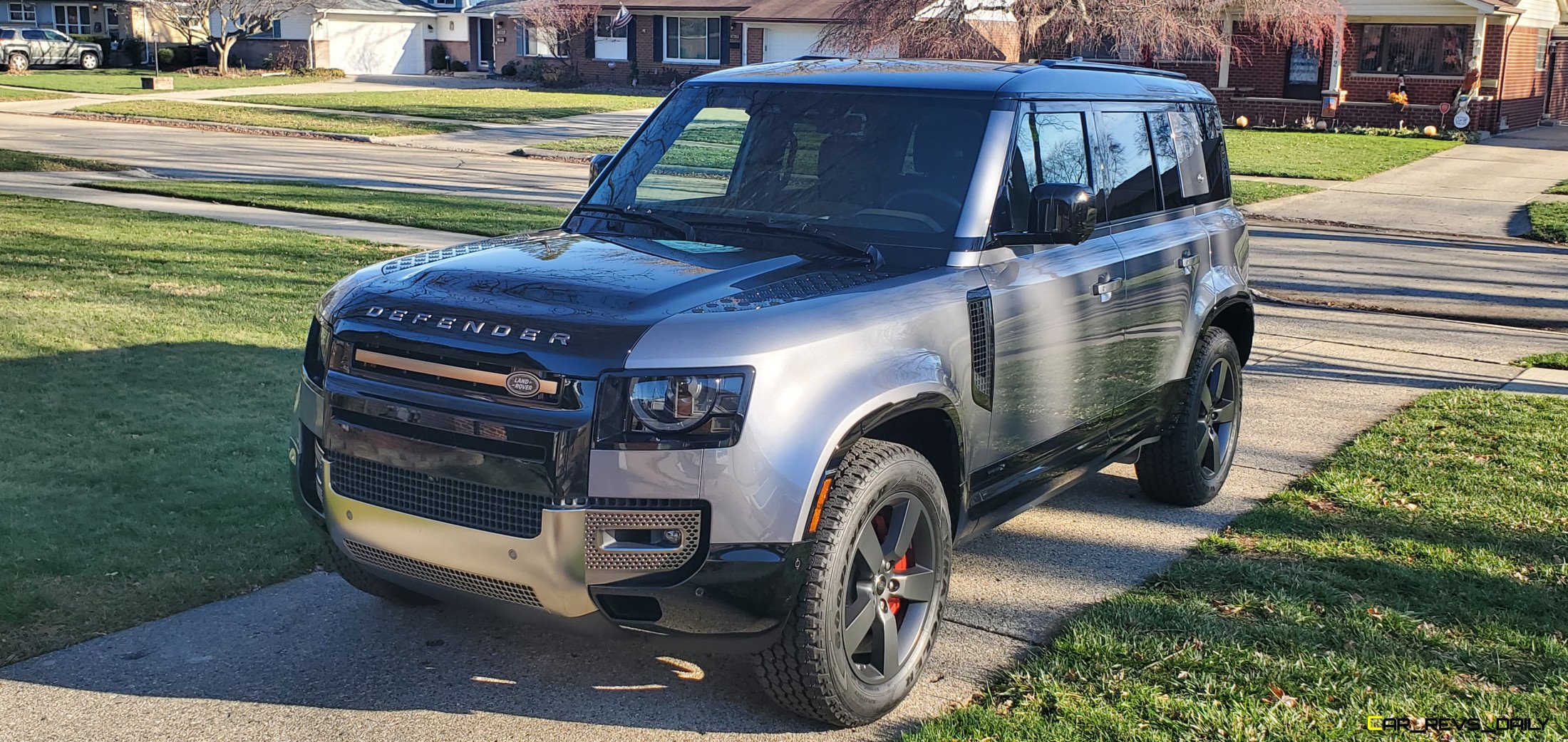The past few years have been a very interesting roller coaster ride for massive swaths of the automotive industry. The twists and turns have included a resurgence in the popularity of utility vehicles with the off-road segment in particular seeing a rapid surge in popularity. A pleasing result of the latter is the return of the Land Rover Defender to the U.S. market. The Defender was last seen here in the 1990s before tightening safety regulations forced it to retreat back to Europe where it remained a compelling treat that was just out of reach for Americans. Land Rover is changing that with the all new Land Rover Defender which promises to bring the magic and rugged capability that defined the old model into a package carefully crafted for a new generation of buyers. But is this sequel worthy of praise?
Square and Proud Of It
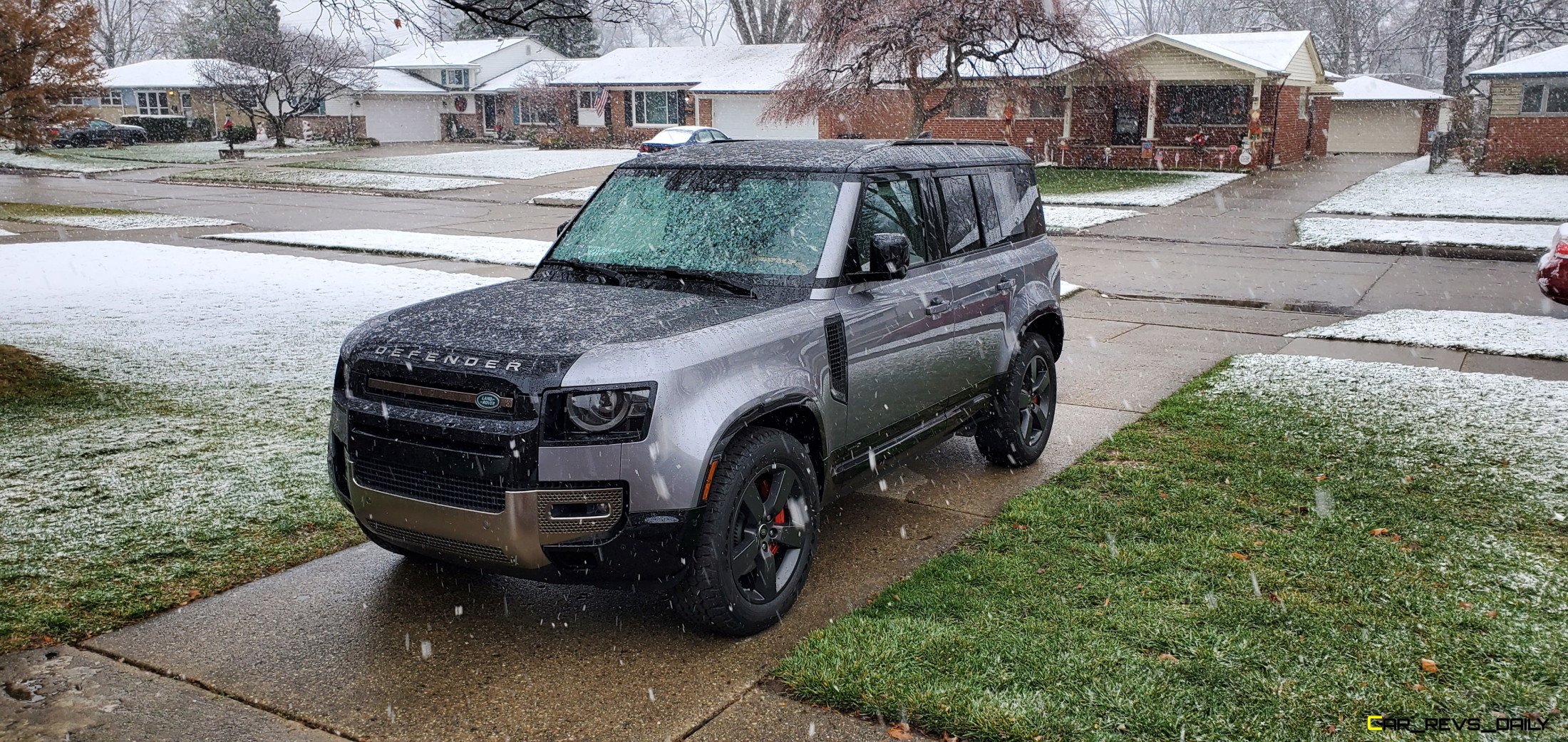
The exterior styling of our range topping X tester certainly takes the role very seriously, and it does a good job of blending elements of the past and the future into a package that works very well for the most part. The look is still very boxy, but it now incorporates some of the modern design elements that have come to define recent Land Rover models. The front fascia still wears a functional face but a cleaner front bumper and hood design helps bring the Defender into the modern age.
Our range topping X model embraces a two tone color scheme for the hood and roof with bold black paint on those pieces mixing with the Eiger Grey paint that adorned the rest of our tester. The side profile is still very boxy and that’s a welcome development since it allows the Defender to have a separate visual identity from both the larger Range Rover as well as the smaller Discovery family.
The rear is arguably where the styling will generate the most debate. Some will say that the presentation here is stunted and that it lacks substance. In our case we actually like what designers have done especially in regards to the double stacked taillights and the rear window panel overlay. Our rig also came with optional 20-inch Satin Grey wheels which replaced the typically standard 19-inch hoops. The bigger wheels helped enhance the Defender’s presence and that’s especially true when they are paired with the bold red brake calipers. Sadly our example did not come equipped with the Explorer pack which allows the Defender to flaunt its safari grade charms to its full potential.
Defender’s Cabin Built For Adventure
Slip inside the interior of the Defender and you are immediately immersed in the high levels of comfort and technology that it brings to passengers. While it’s not quite as luxurious as the Range Rover, it does ride a middle ground between it and the Jeep Wrangler. The leather seats in our tester were a bit firm in typical Land Rover tradition, but they make up for it by offering 18 way power adjustability as well as heated and cooled functionality. The accompanying heated steering wheel proved to be a welcome combination when Michigan’s first blast of winter weather rolled through the state.
Front legroom in our tester was adequate with headroom being a very impressive figure. The second row is also spacious for passengers with the Land Rover coming very close to the Wrangler Unlimited in terms of measurements. Our tester also impressed with cargo room with our 110 grade example boasting 78.8 cubic feet of space when the second row is folded down. The 110 can also be equipped with an optional third row seat, but that bit of real estate is best reserved for children. We also adored the optional 10-speaker Meridian audio system which delivered punchy notes when playing our favorite tunes.
But technology will ultimately be the figurative spearhead for the Defender with the model using JLR’s latest infotainment technology. Dubbed Pivi Pro, JLR claims that it wields the most comprehensive list of improvements that we have ever seen in the firm’s infotainment offerings. The system boasts a 10-inch color touchscreen which comes packed with crisp graphics and faster boot up speeds. Pivi Pro also allows the Defender to receive over the air updates thanks to two LTE modems that are engineered into the car. This allows the Defender to seal a page from the likes of Tesla with buyers seamlessly receiving updates and system improvements while going about their day.
However the system is far from perfect with our experience being marred by occasions where we fought with the system for it to recognize certain inputs. The navigation system is also frustrating to use with the unit repeatedly giving us wrong direction data when we tasked it with traveling to certain destinations. Lastly the touch style steering wheel controls were a welcome touch of novelty, but they were also somewhat confusing to use especially when configuring the fully digital instrument cluster that came with our tester.
Trail Ready Performance For Any Occasion
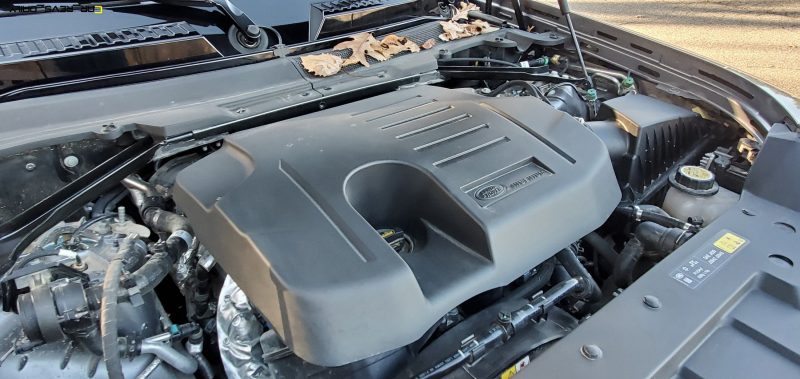
When buyers spec their Defender, choosing an engine will be the next key choice that they will need to make. Lower tier Defender 110 models come with a standard 2.0 liter turbocharged four cylinder engine that makes 296 horsepower and 295 lb-ft of torque. Our example came equipped with the beefier 3.0 liter turbocharged inline six which brings 395 horsepower and 406 lb-ft of torque. It’s also a mild hybrid unit which aims to improve fuel economy while also delivering better low end performance.
An eight speed automatic is the sole transmission available and it does a good job rowing through the gears and is every surefooted in its operations. Power from the engine itself is very impressive especially when you consider that the Defender has a curb weight of over 5,000 lbs. Low end grunt is abundant and our time with it showed us that the 3.0 liter is the real deal especially in regards to everyday usability. The lone flaw here is fuel economy with our tester rated at a meager 17 mpg in the city and 22 mpg on the freeway. The hybrid technology is a commendable attempt at raising the Defender’s green driving game, but it alone can’t blunt the effects of the Defender’s boxy shape as well as its high curb weight.
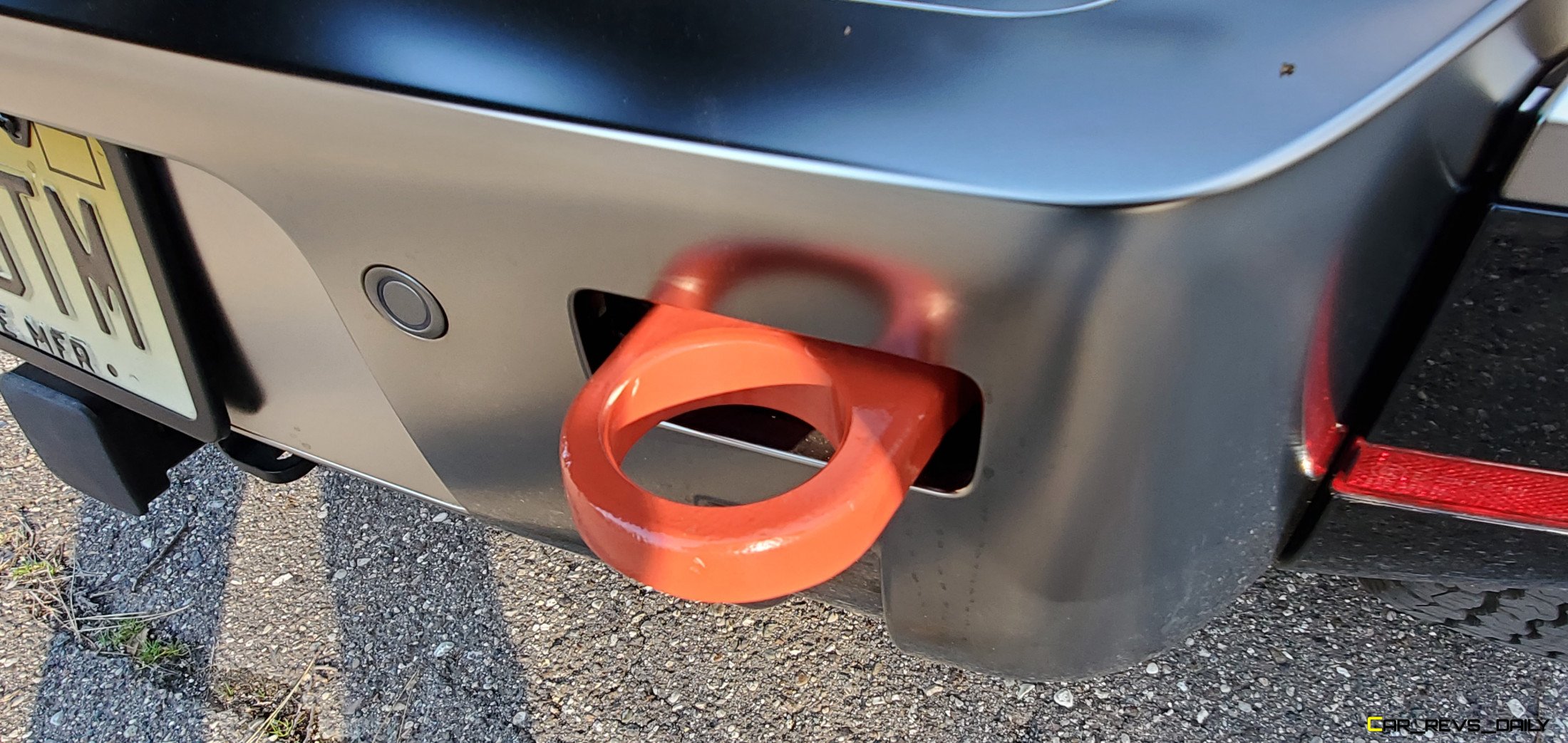
The Defender is far from being a track darling, and it will gleefully deliver ample amounts of body roll when tasked with taking a sharp corner at high speeds while the off-road tires squeal in protest. Instead, the Defender prefers a more methodical approach and will reward buyers with impressive amounts of ride quality from its standard air suspension. The air suspension allows the Defender to conquer a wide range of obstacles, and it’s important to note that the Defender is the only one in its segment to come with such a feature.
Defender Value Quotient
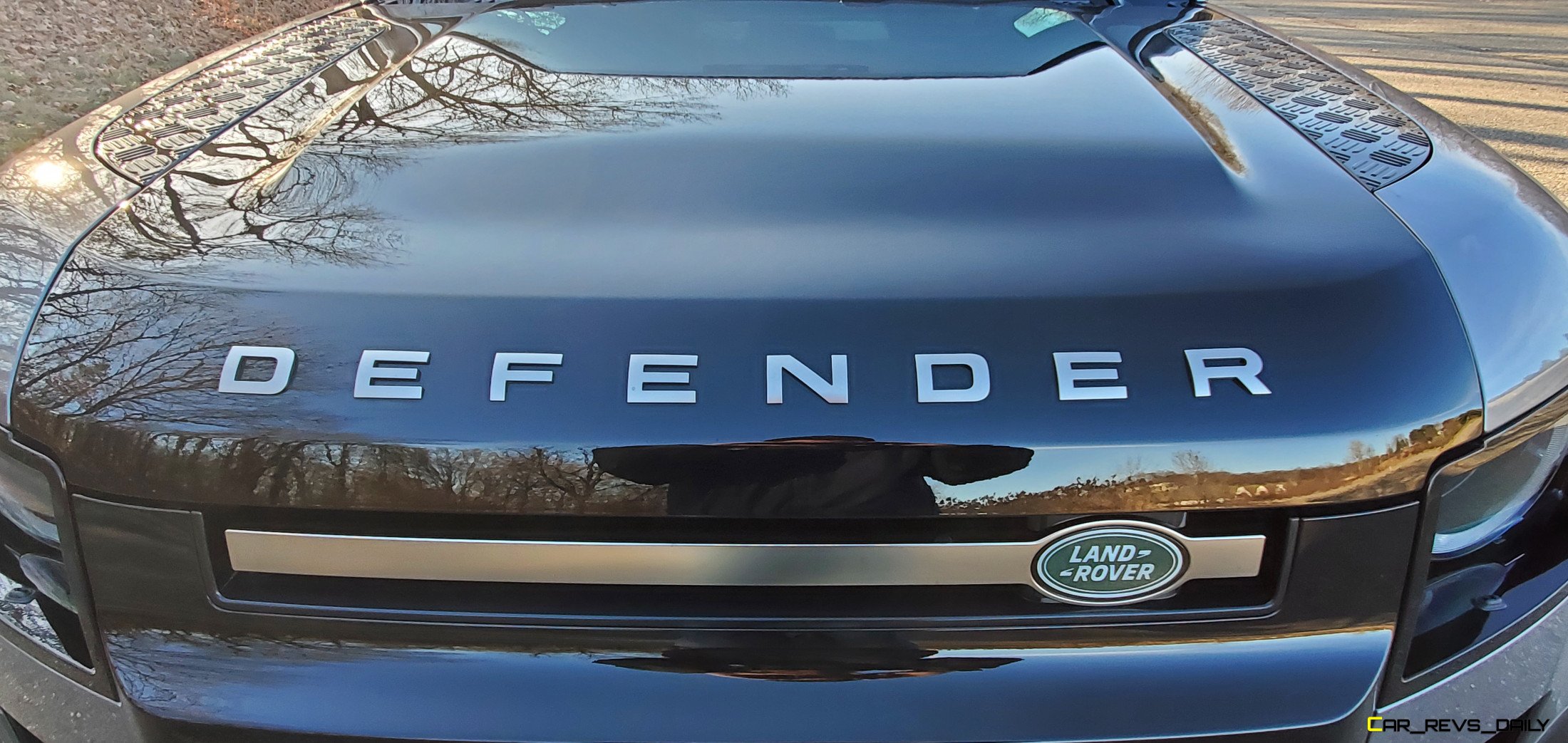
Pricing for the 2020 Land Rover Defender starts at $50,925 which nets you a four cylinder equipped model with four wheel drive as well as a few safety features. Buyers that choose to upgrade to the range topping X model are greeted with a base price of $83,000. Our example arrived with a light sprinkling of optional extras including the $1,075 three zone climate control system and the $700 cold climate pack which helped push the final sticker to $85,750. This figure is just under $90,000 and also puts the Defender in some very elite company.
That said, if we were buying one for ourselves, we would actually avoid the X and instead go for the X-Dynamic model. This trim serves as the proverbial middle ground between the base model and the X and has a slightly lower base price of $65,500. It also comes with the more powerful six cylinder engine, and also brings a whole host of standard equipment to the table while also omitting some of the more extravagant options that some buyers might not necessarily need. This pricing also puts the Defender ahead of the less expensive Jeep Wrangler family, but look for the two to still duke it out on the nation’s trails with the duo being rivals when tasked with similar driving in Europe.
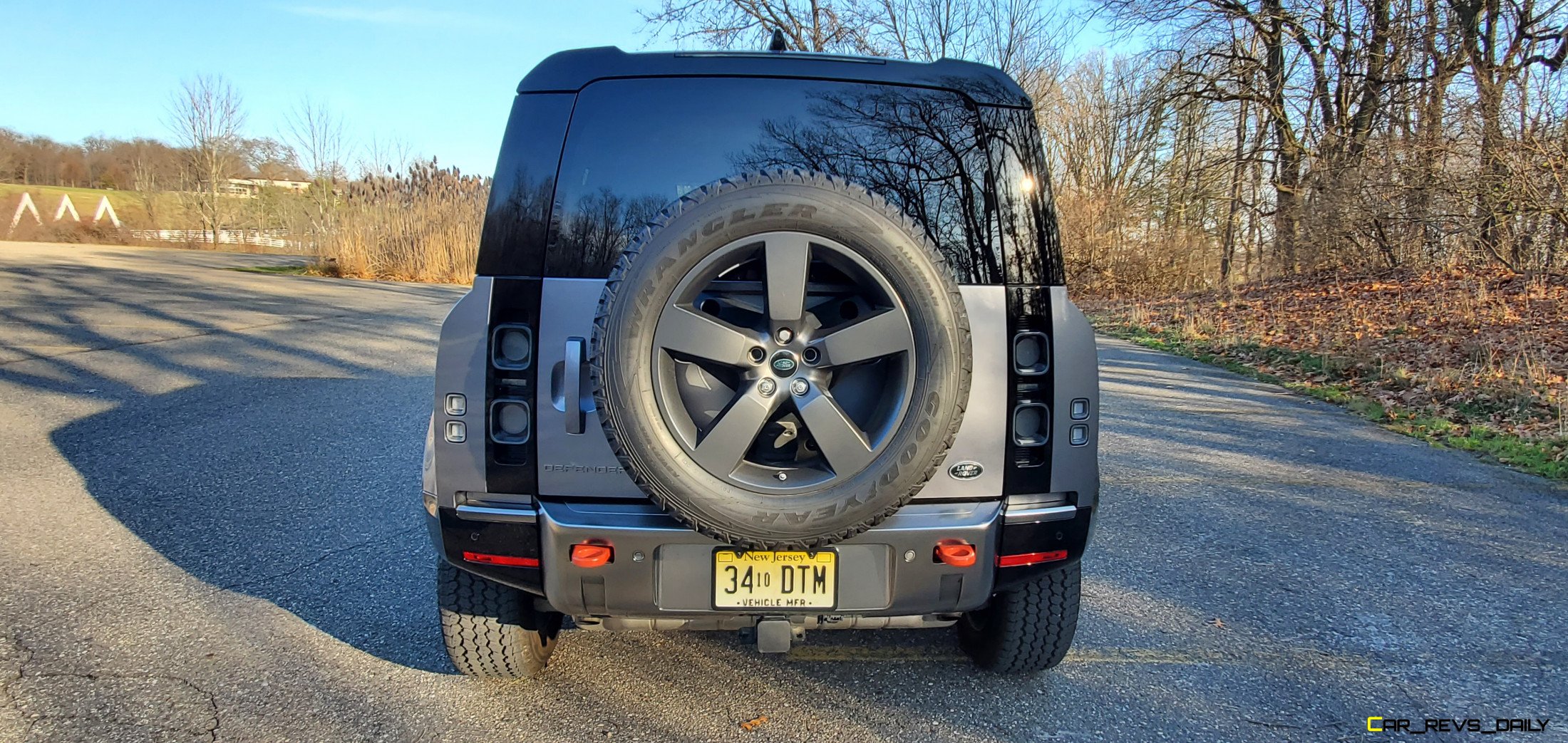
In short the 2020 Land Rover Defender 110 lives up to the hype. It’s a welcome reboot of an icon while also giving it some new tricks to help it mesh with a new generation of off-road buyers looking for increased digitalization and capability to put on their SUV flavored sundae. With the short wheel base 90 variant now in showrooms, the Defender is poised to make a solid comeback and we hope it can stick around for a long time.
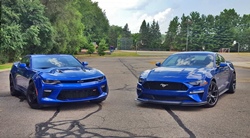
Carl Malek has been an automotive journalist for over 10 years. First starting out as a freelance photographer before making the transition to writing during college, his work has appeared on numerous automotive forums as well as websites such as Autoshopper.com.
Carl is also a big fan of British vehicles with the bulk of his devotion going to the Morgan Motor Company as well as offerings from Lotus, MG, and Caterham. When he is not writing about automobiles, Carl enjoys spending time with his family and friends in the Metro Detroit area, as well as spending time with his adorable pets.

